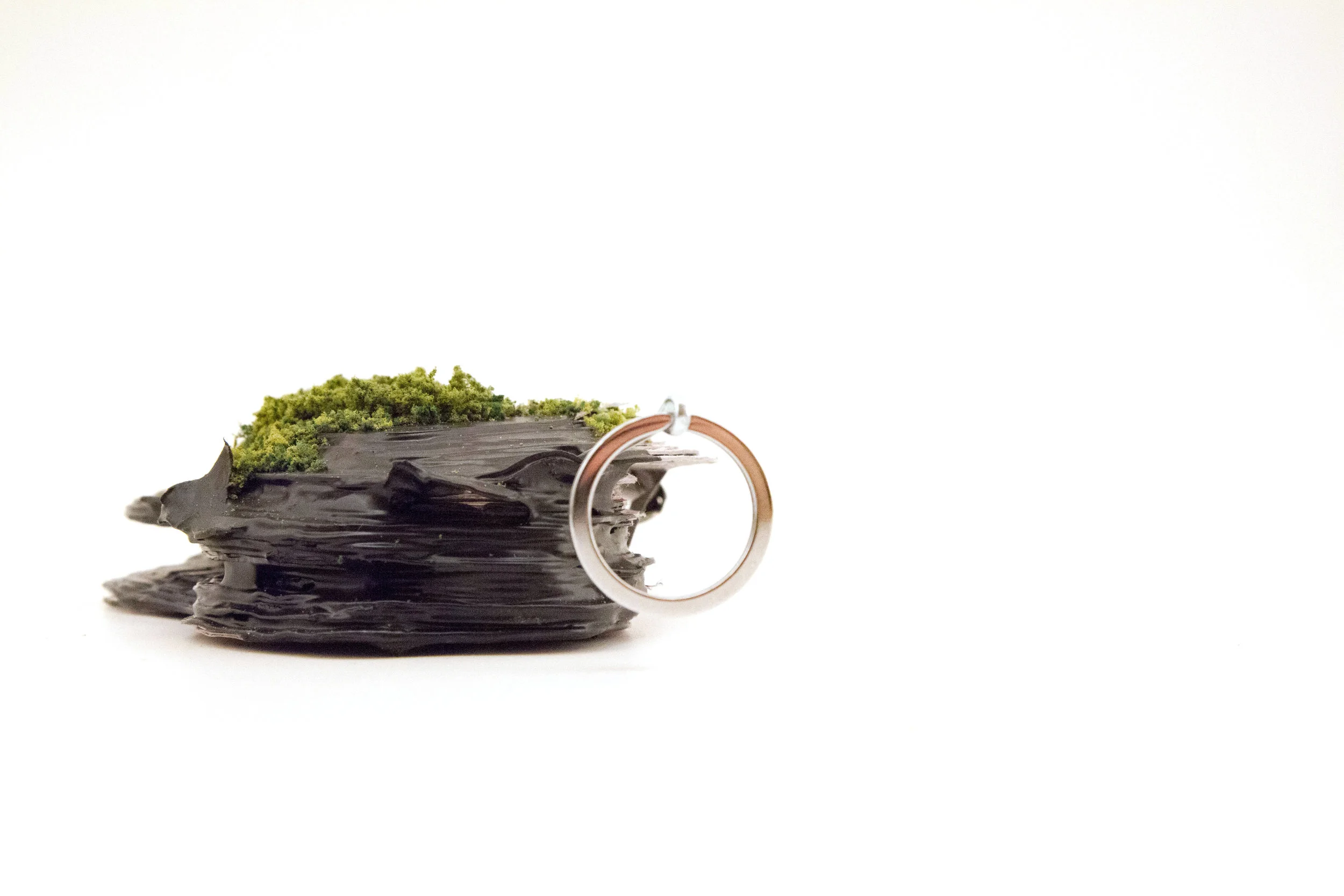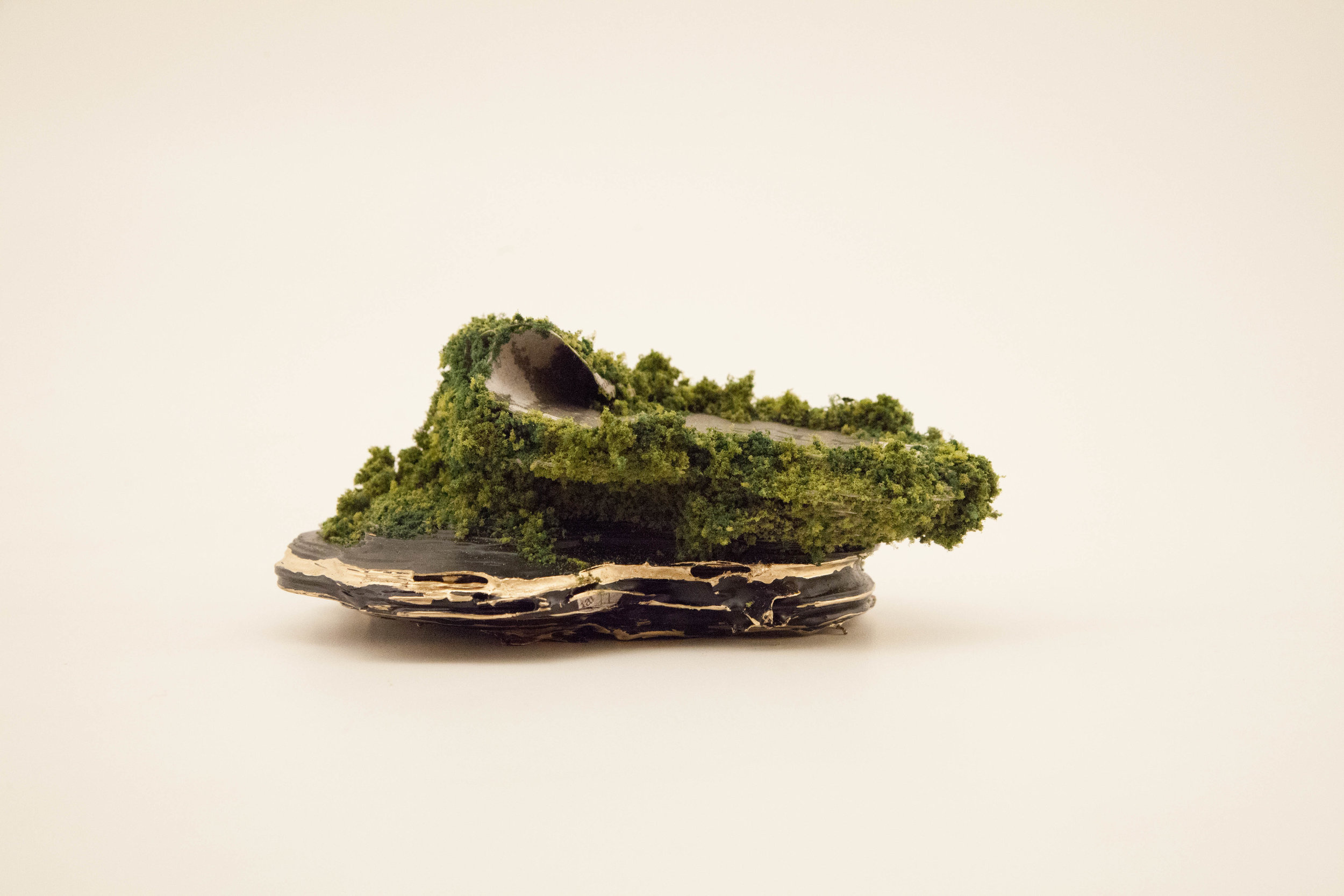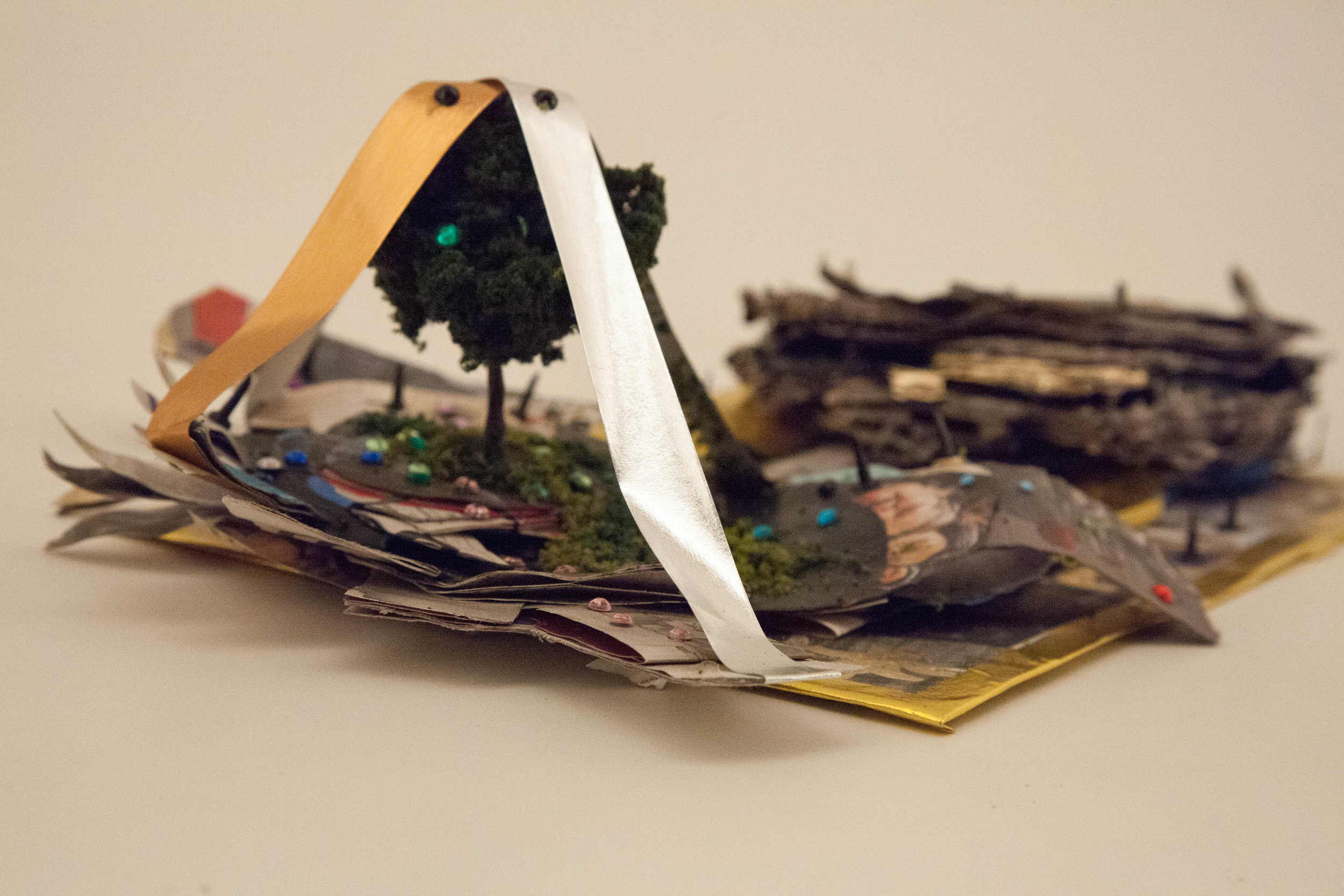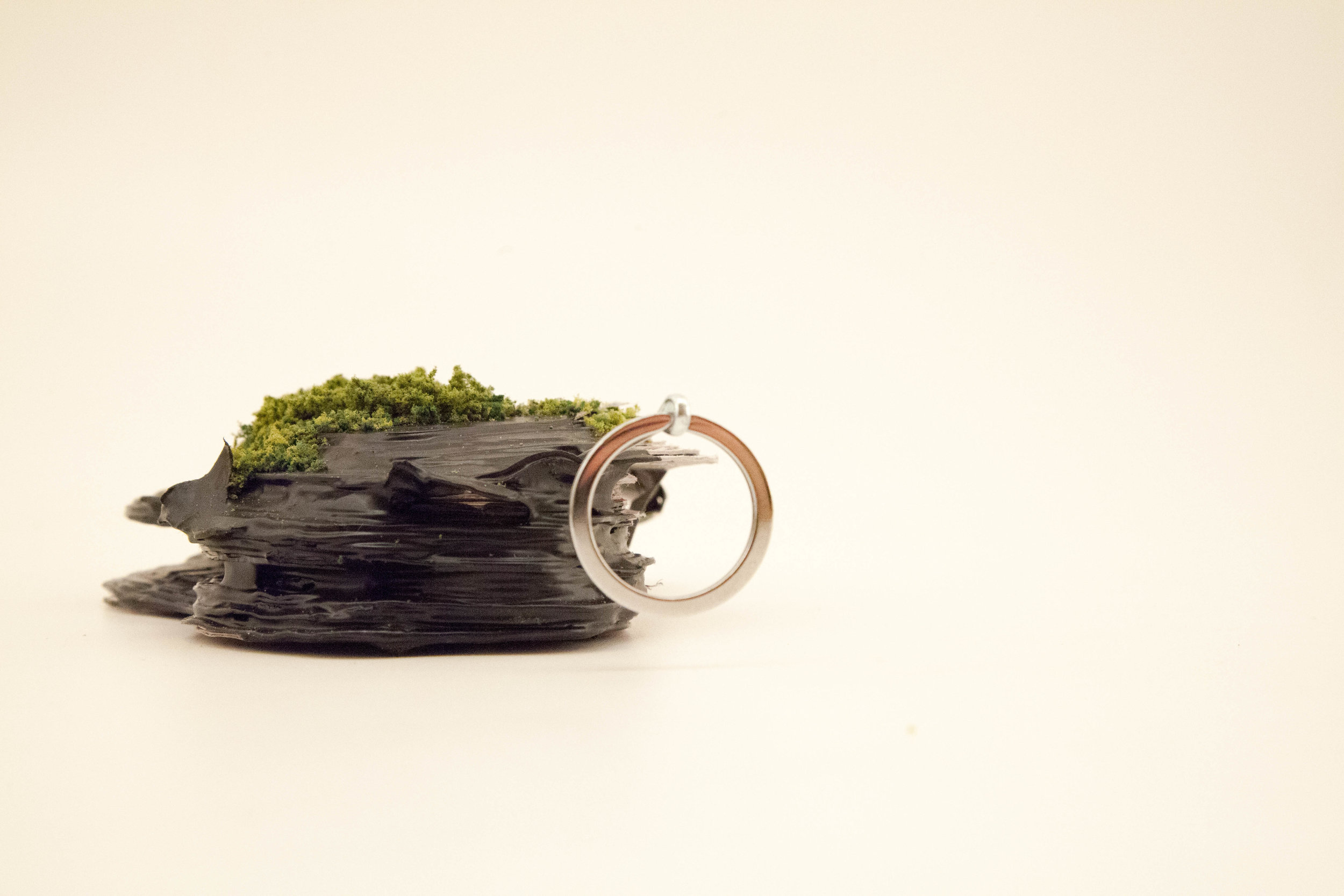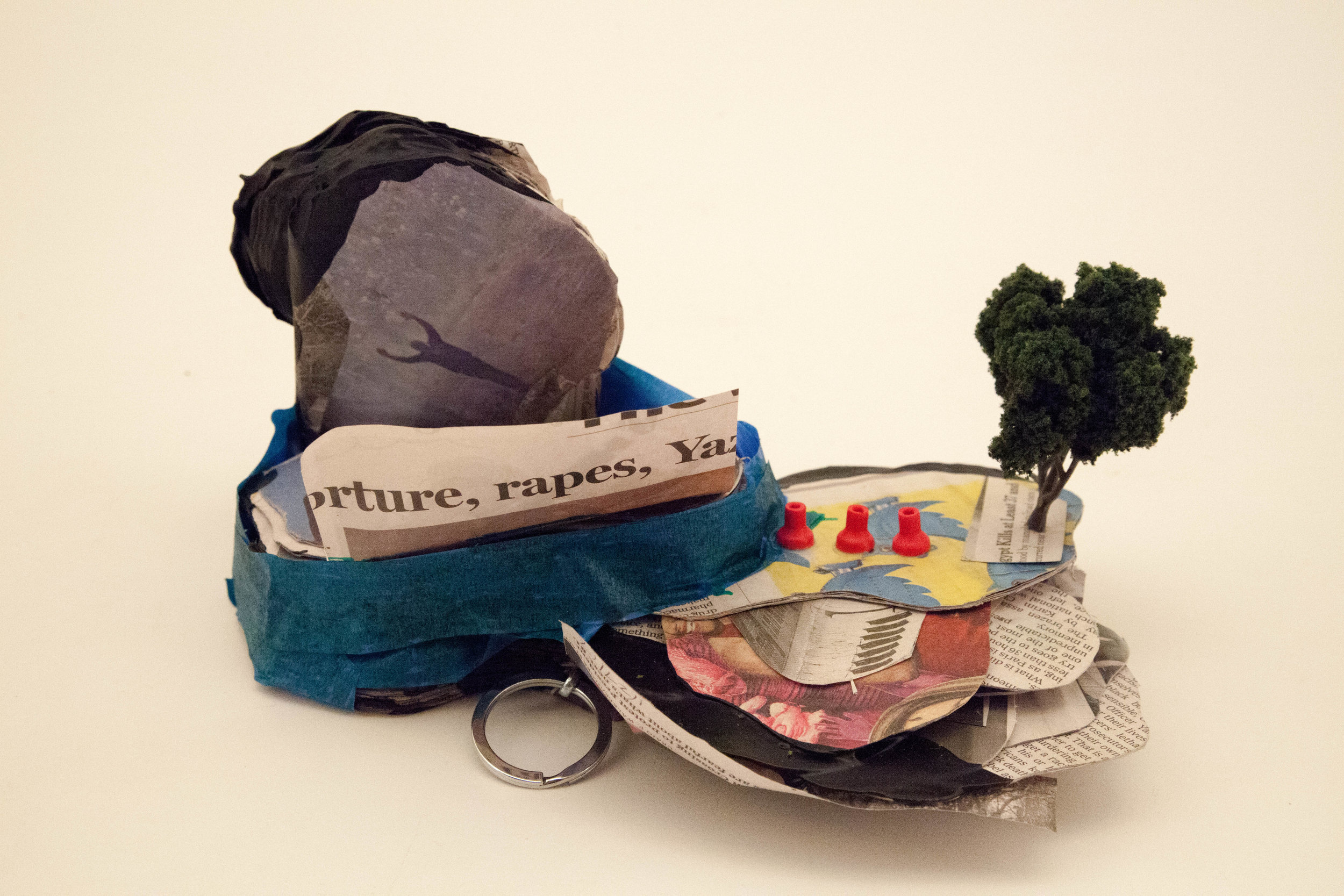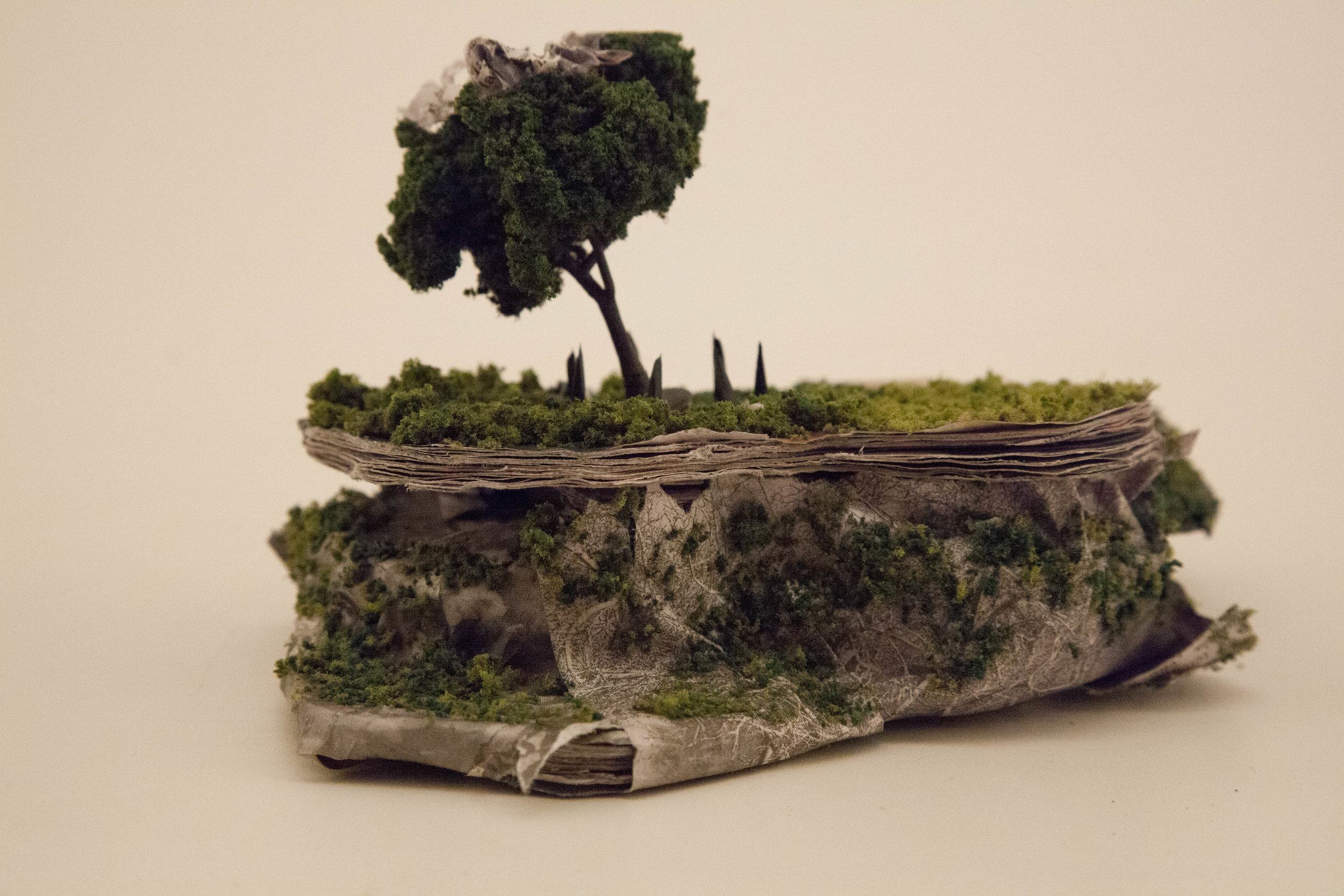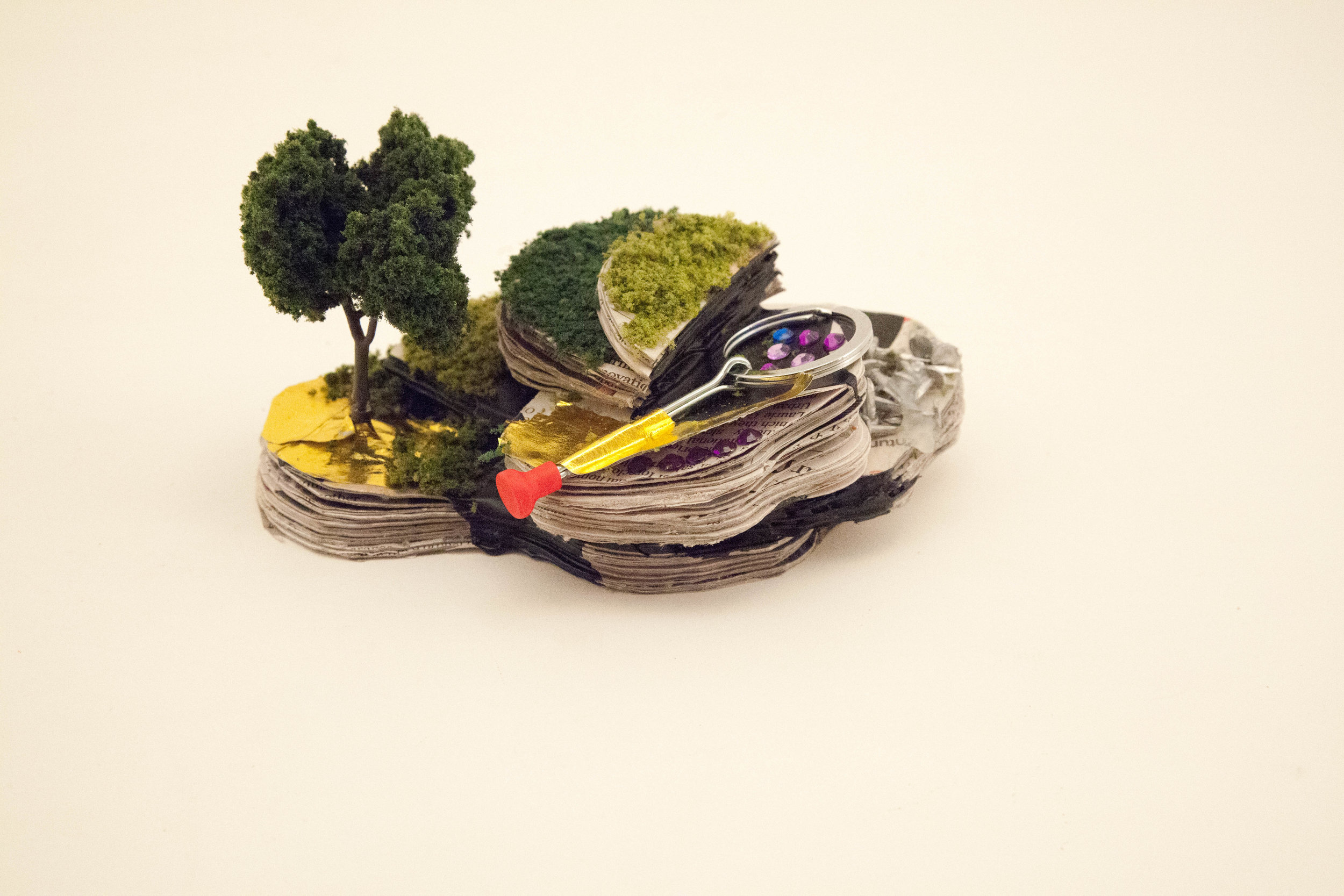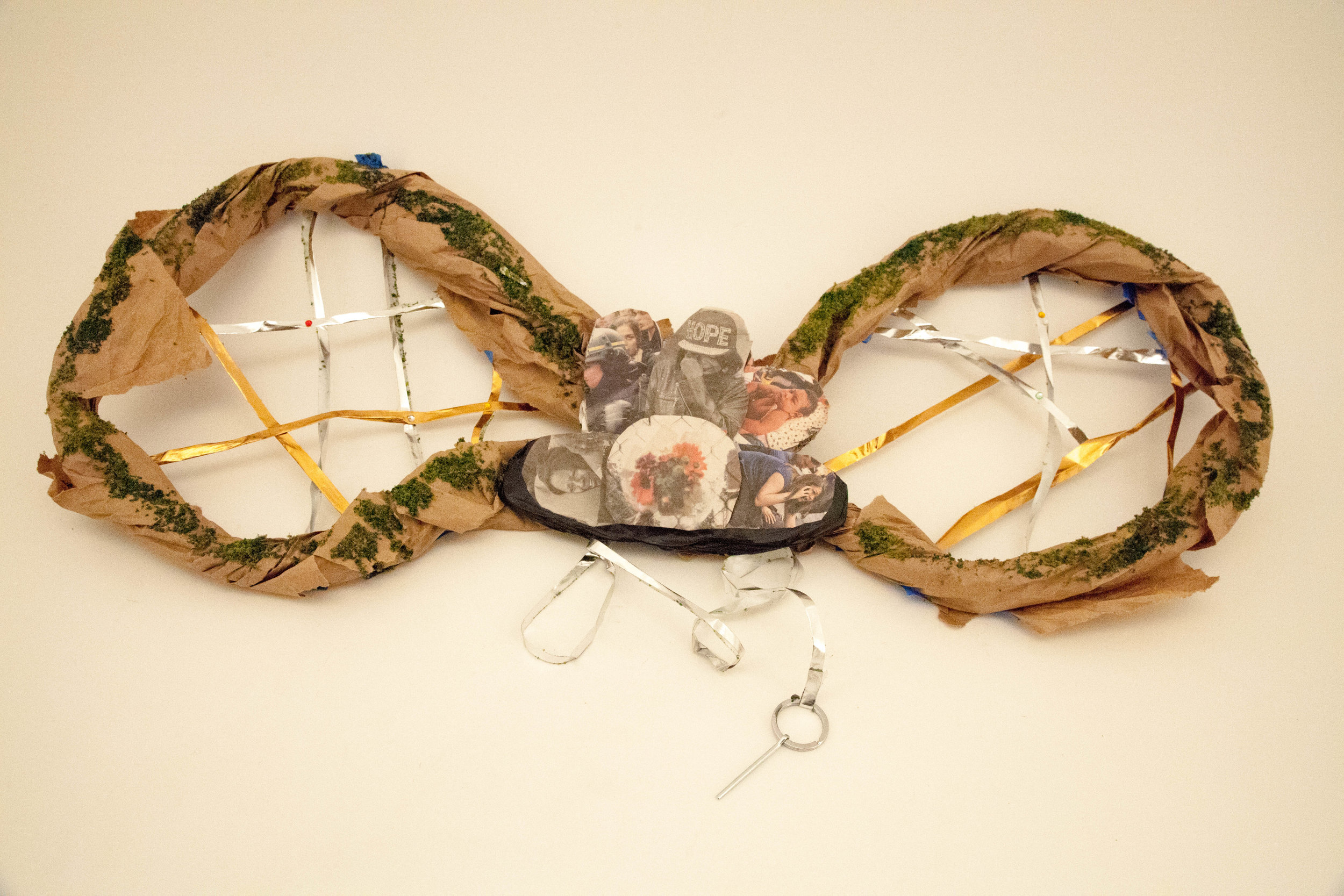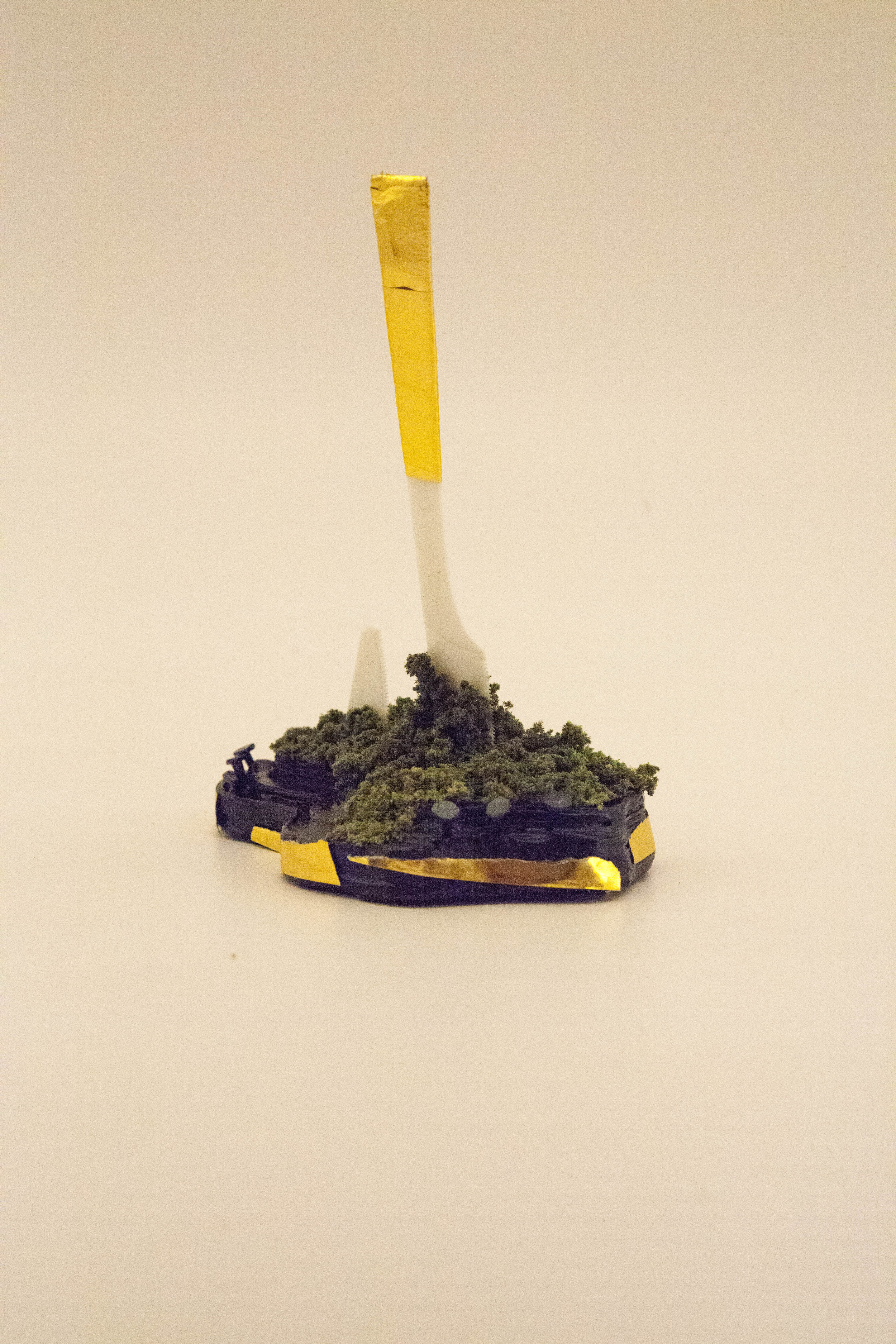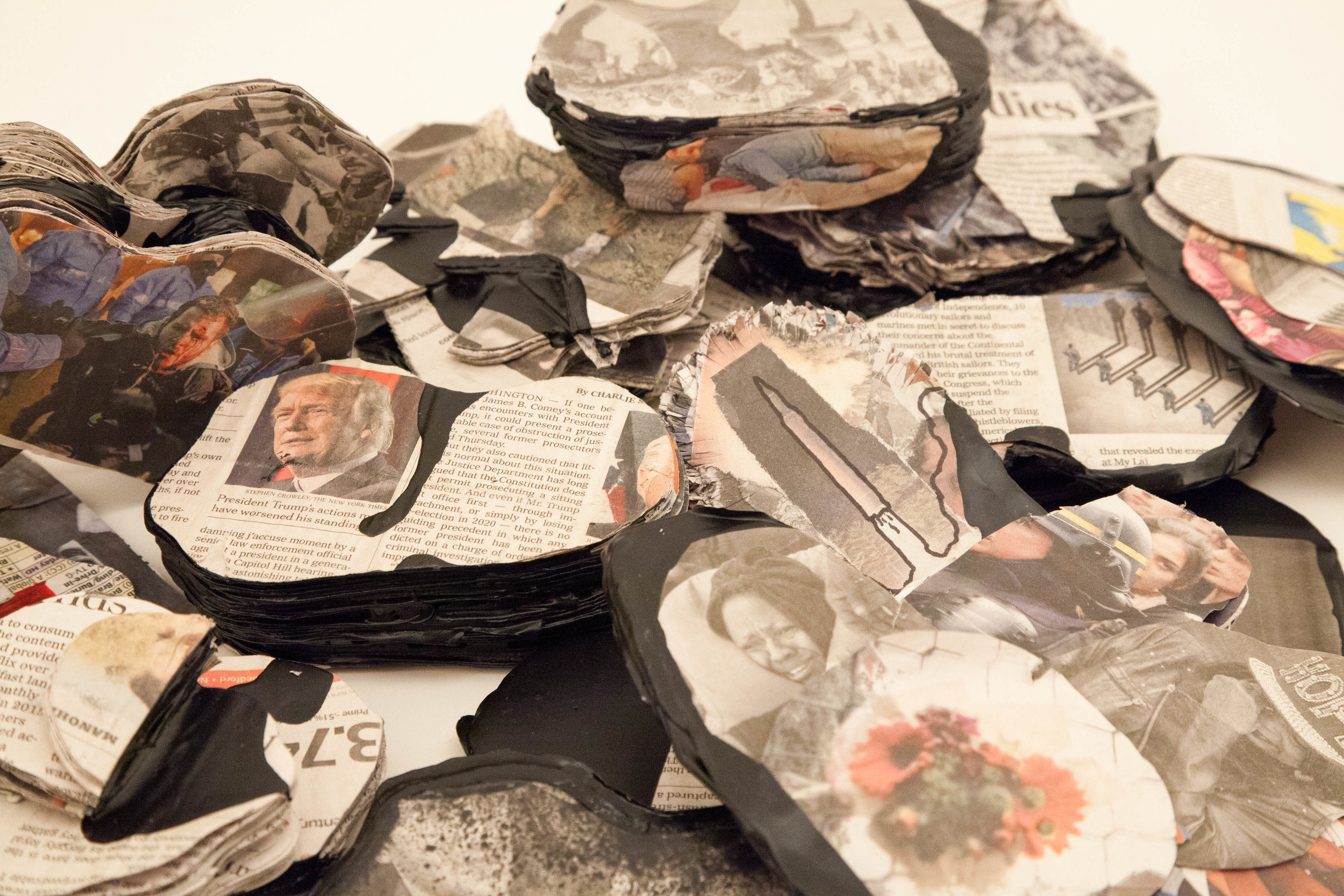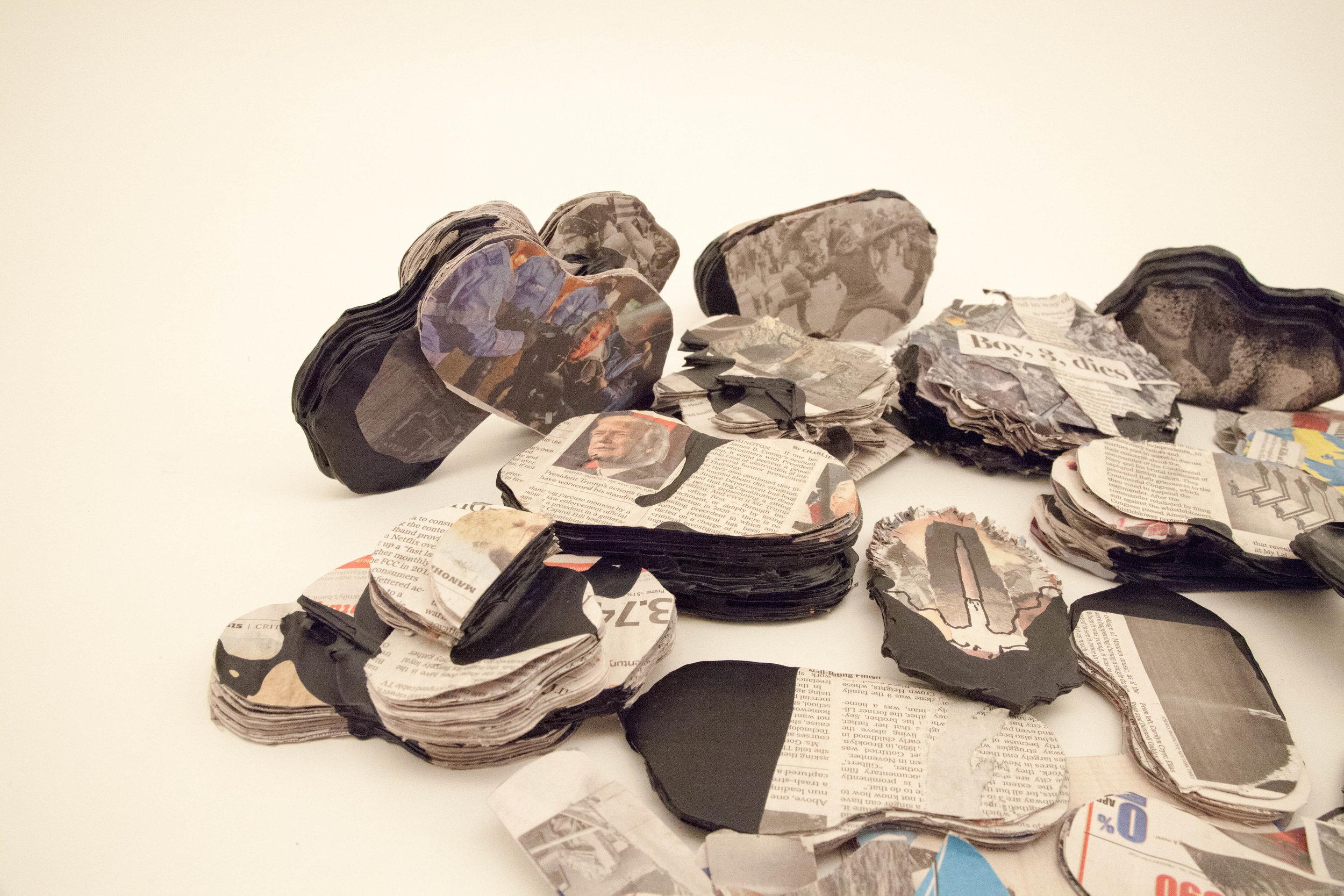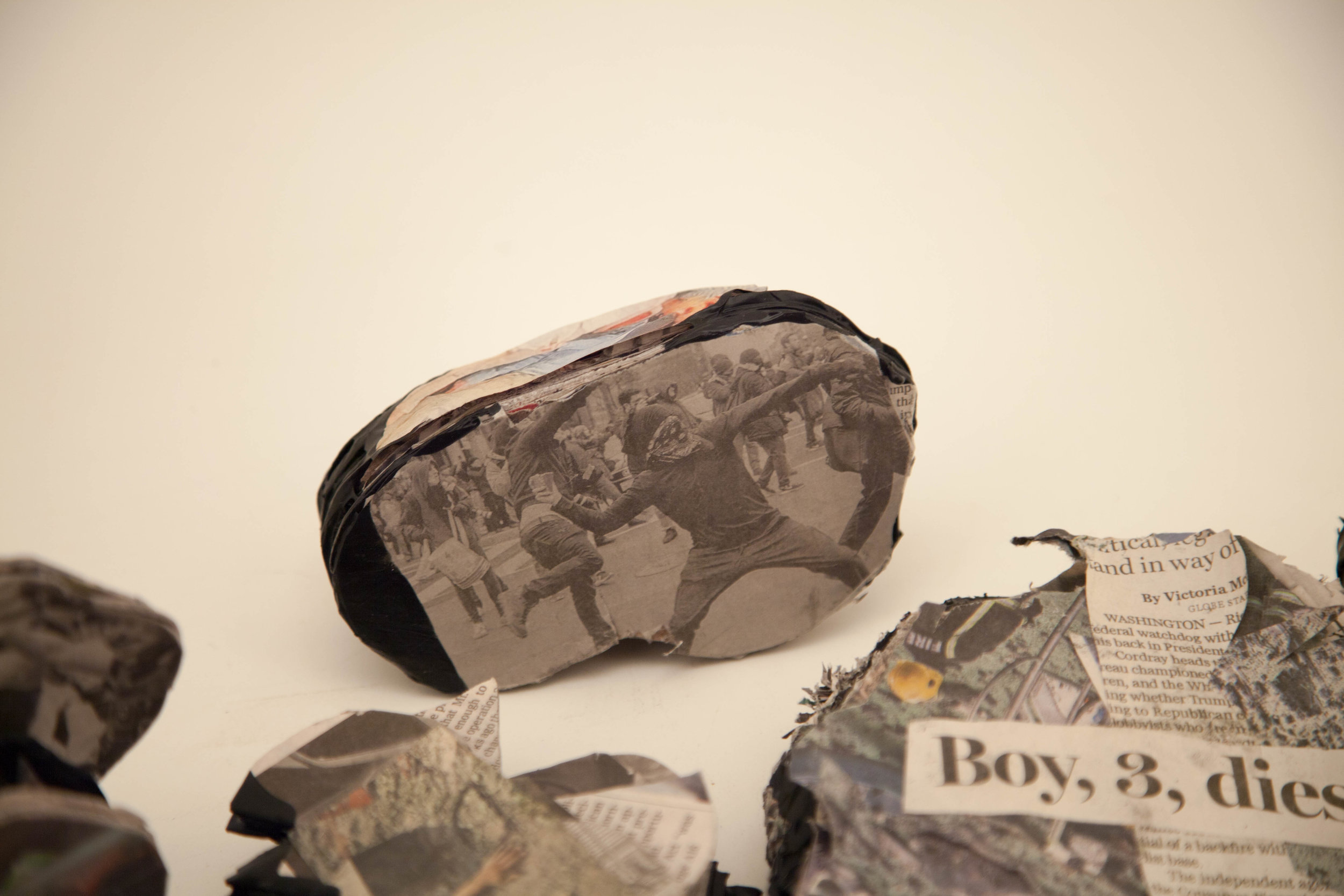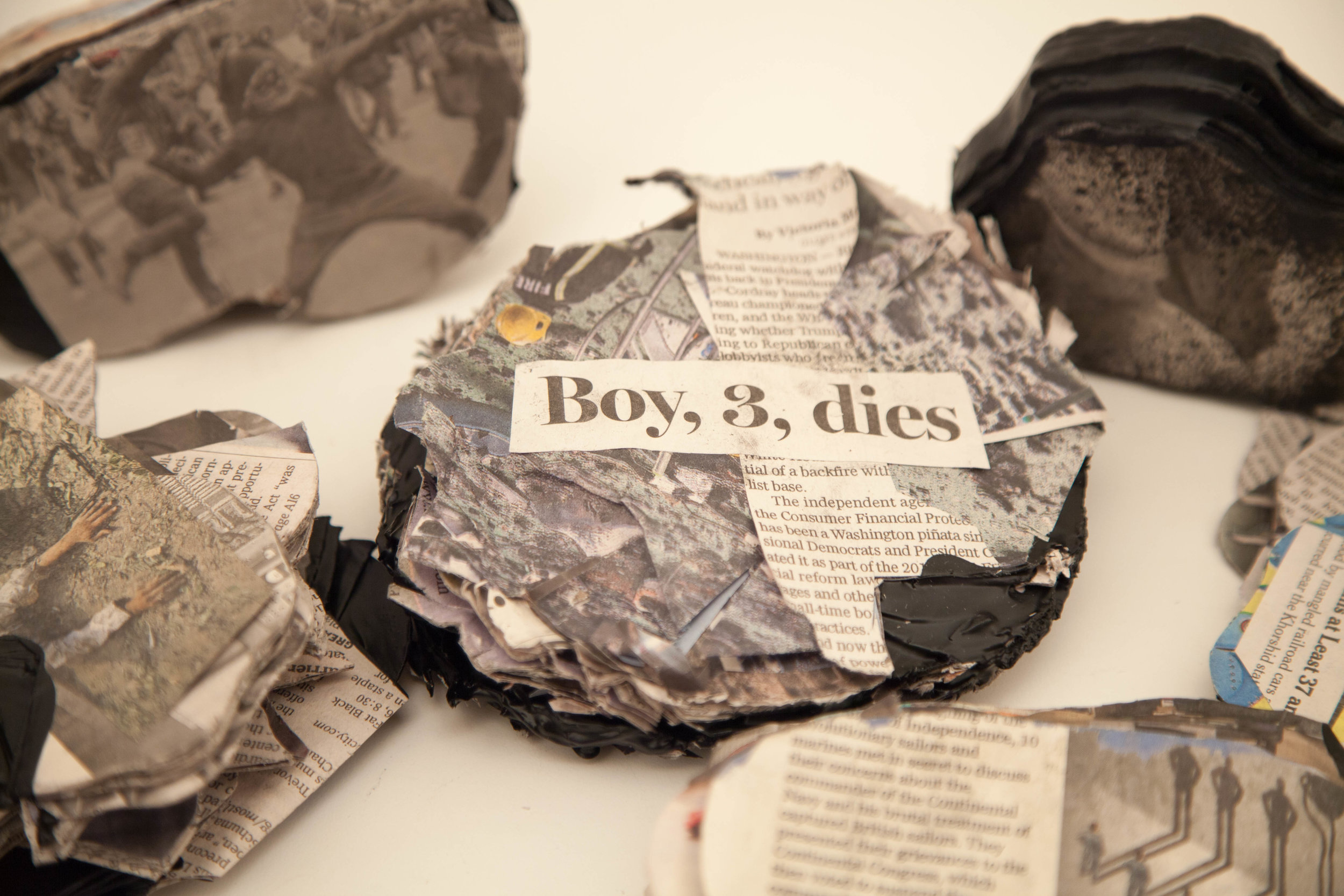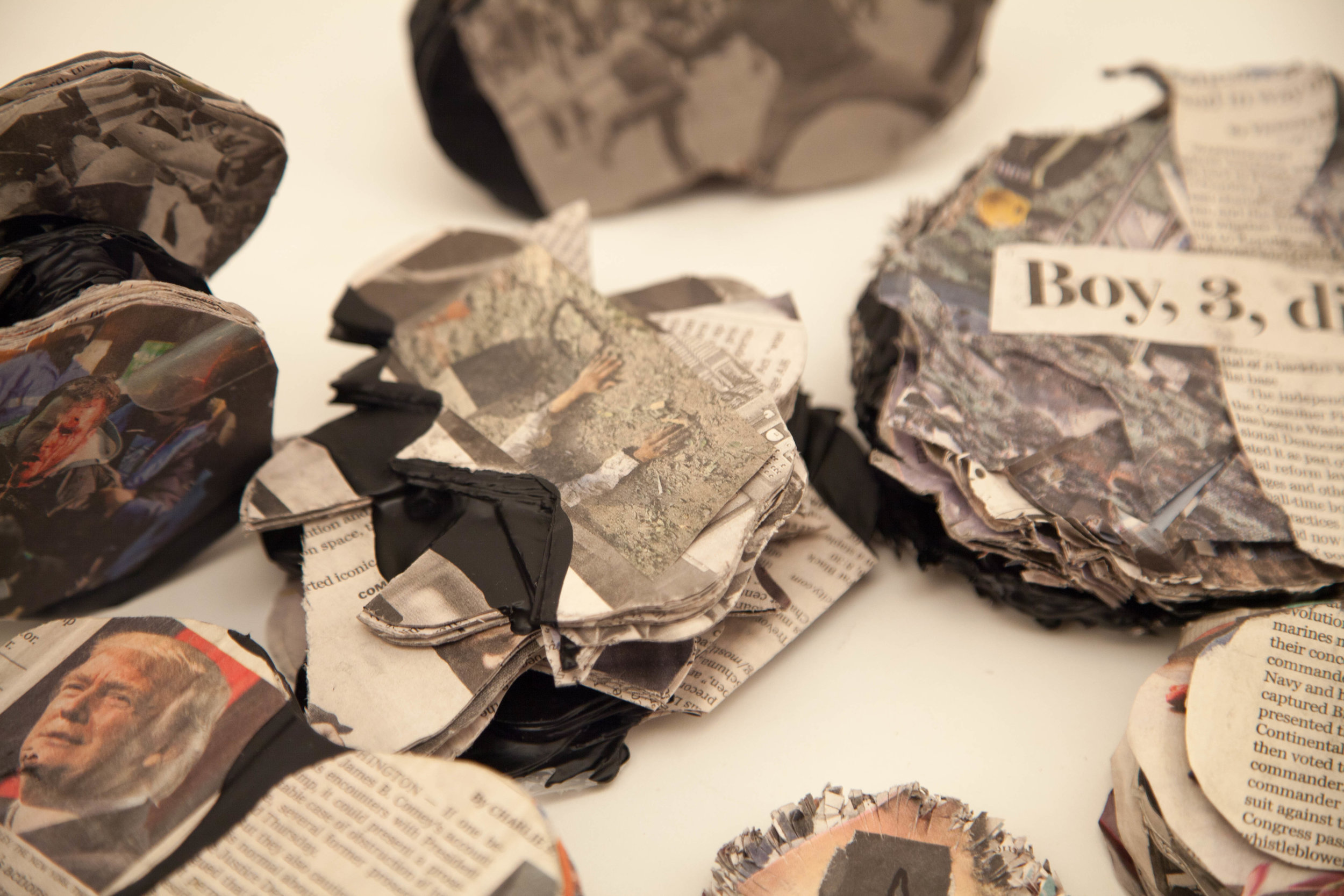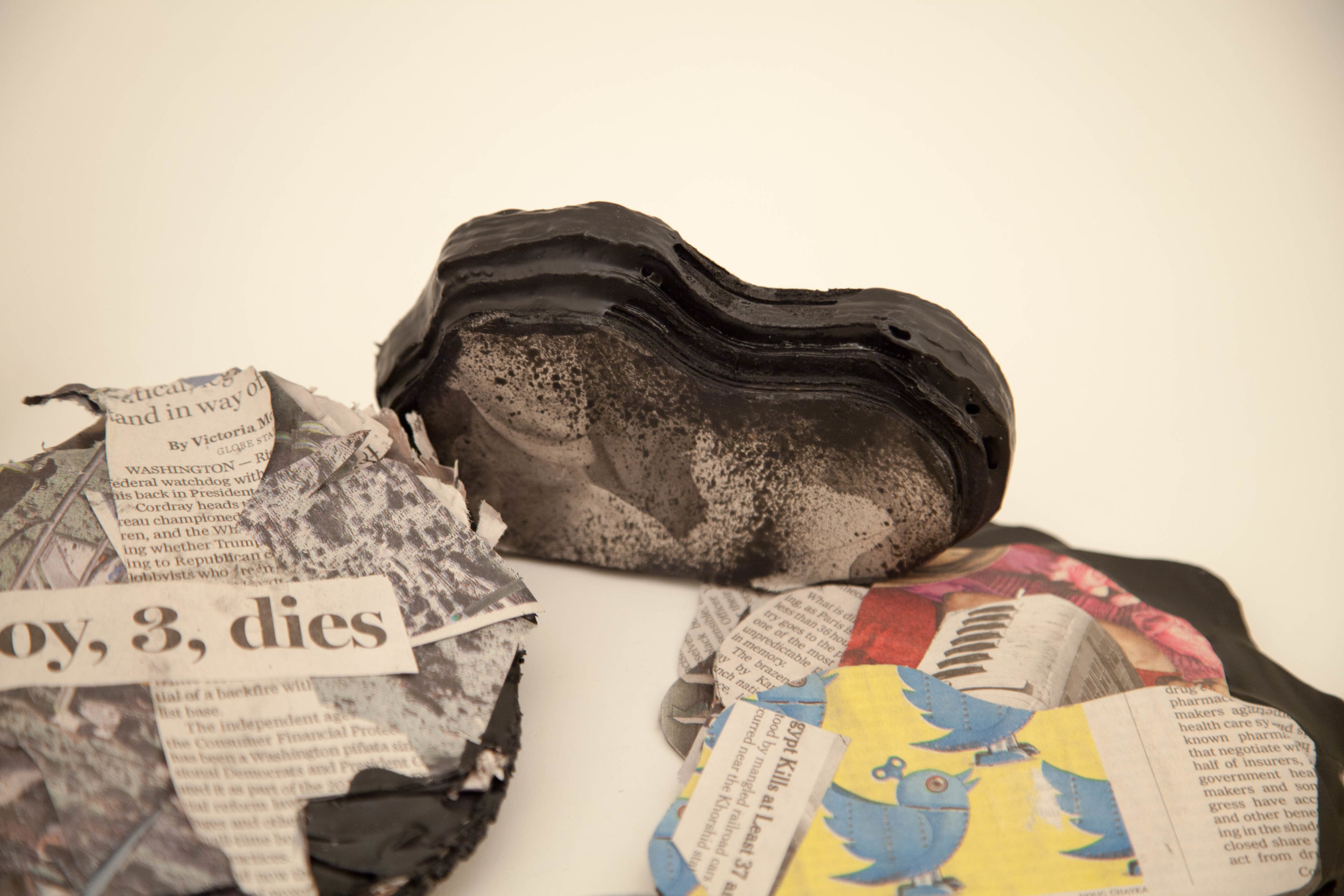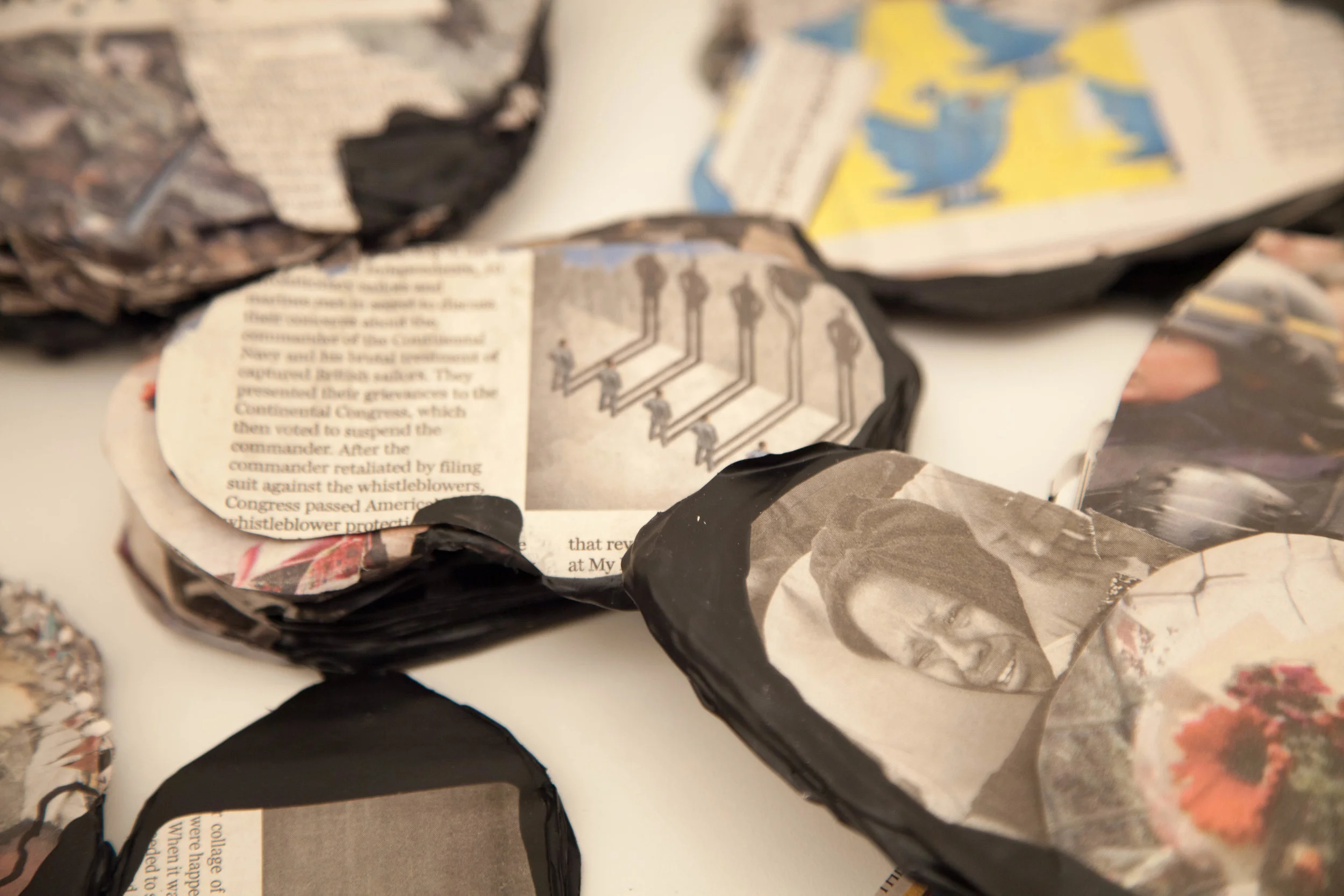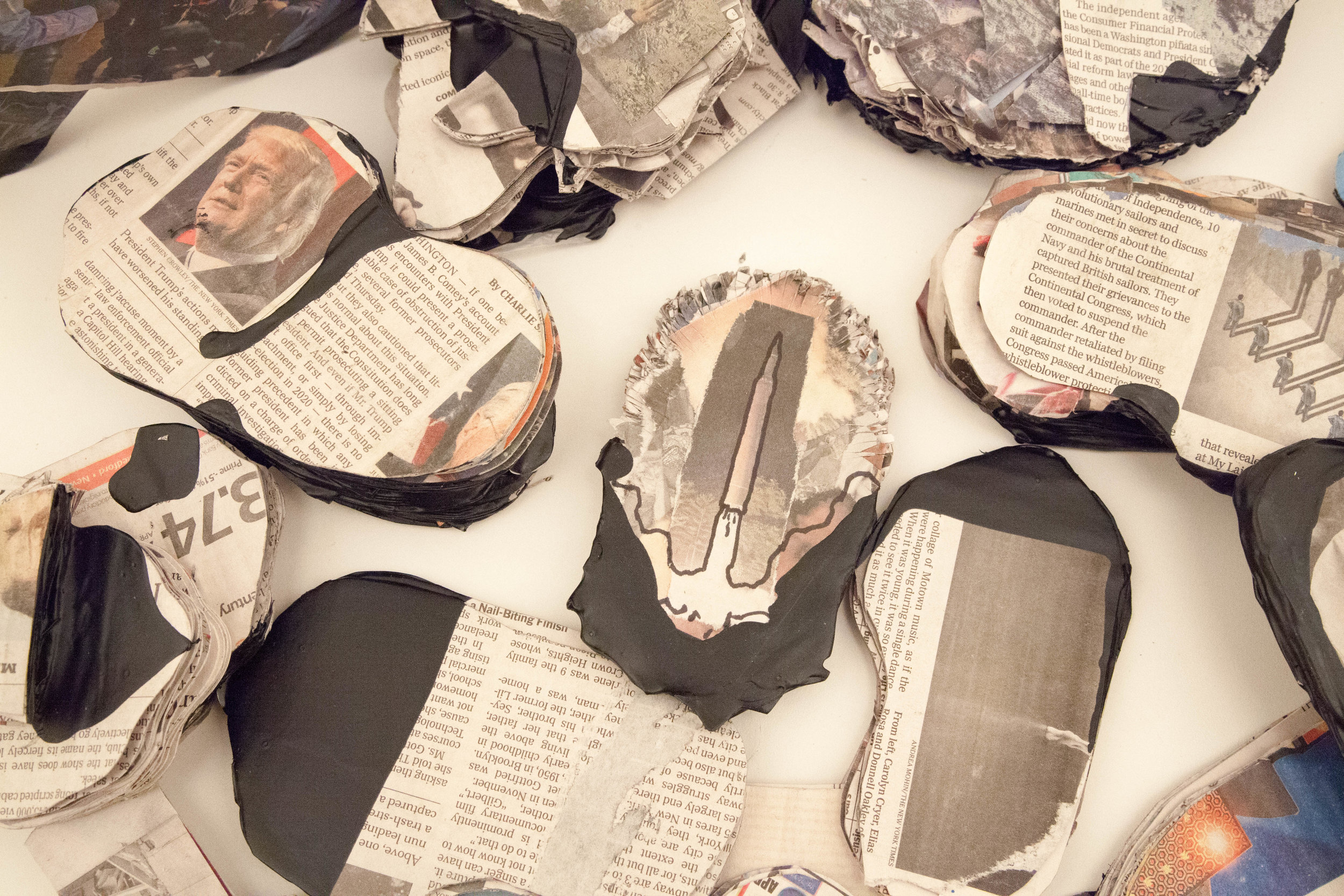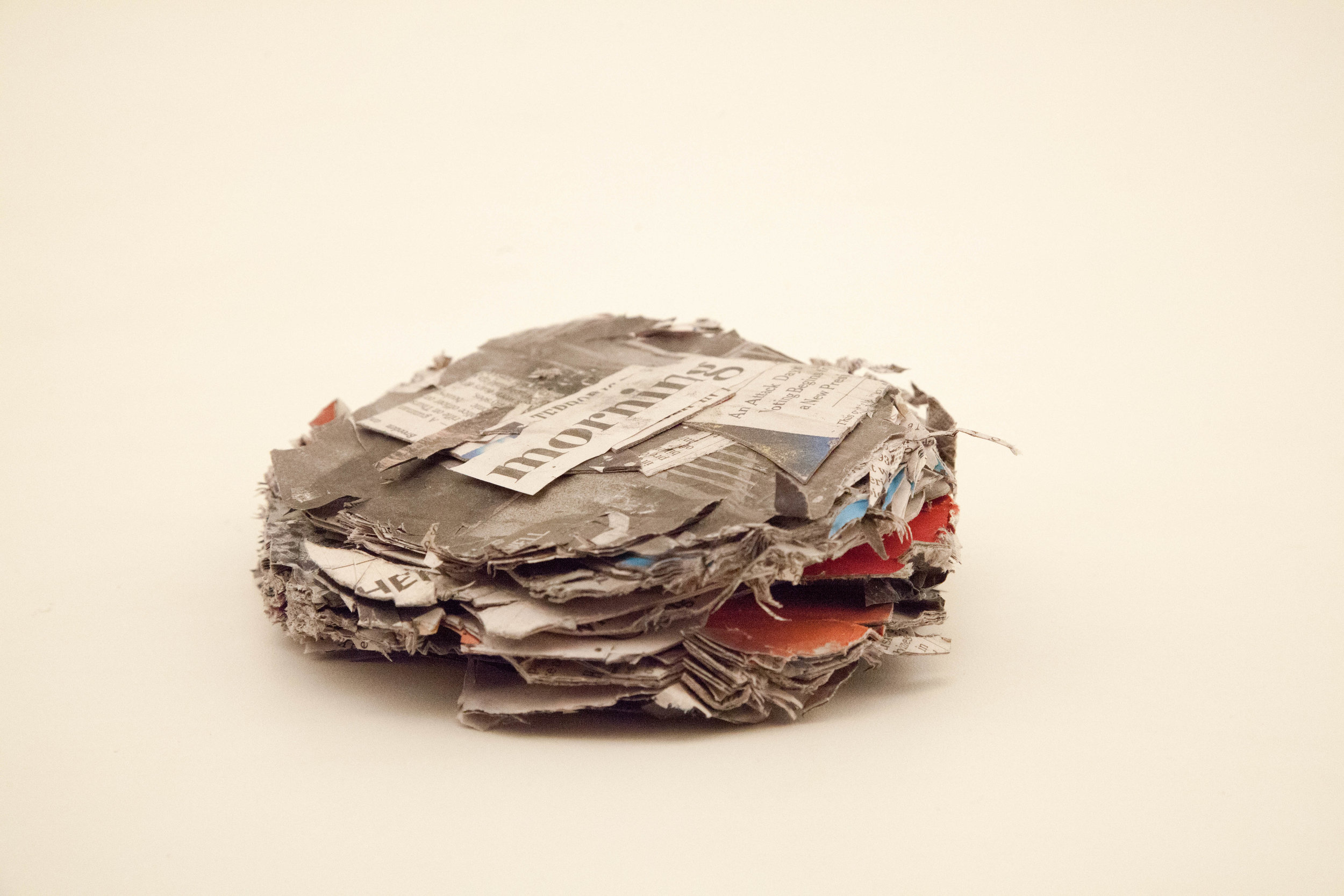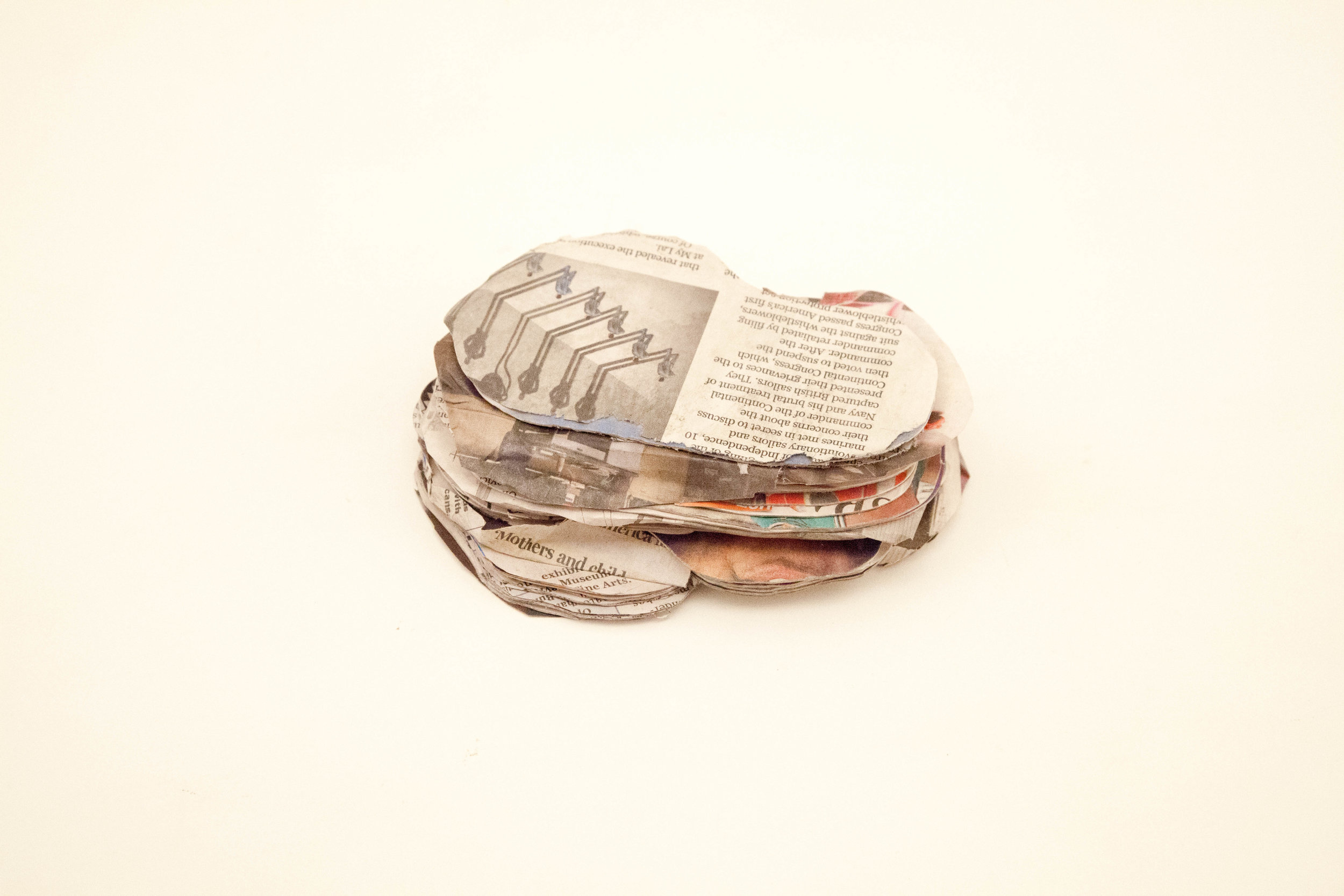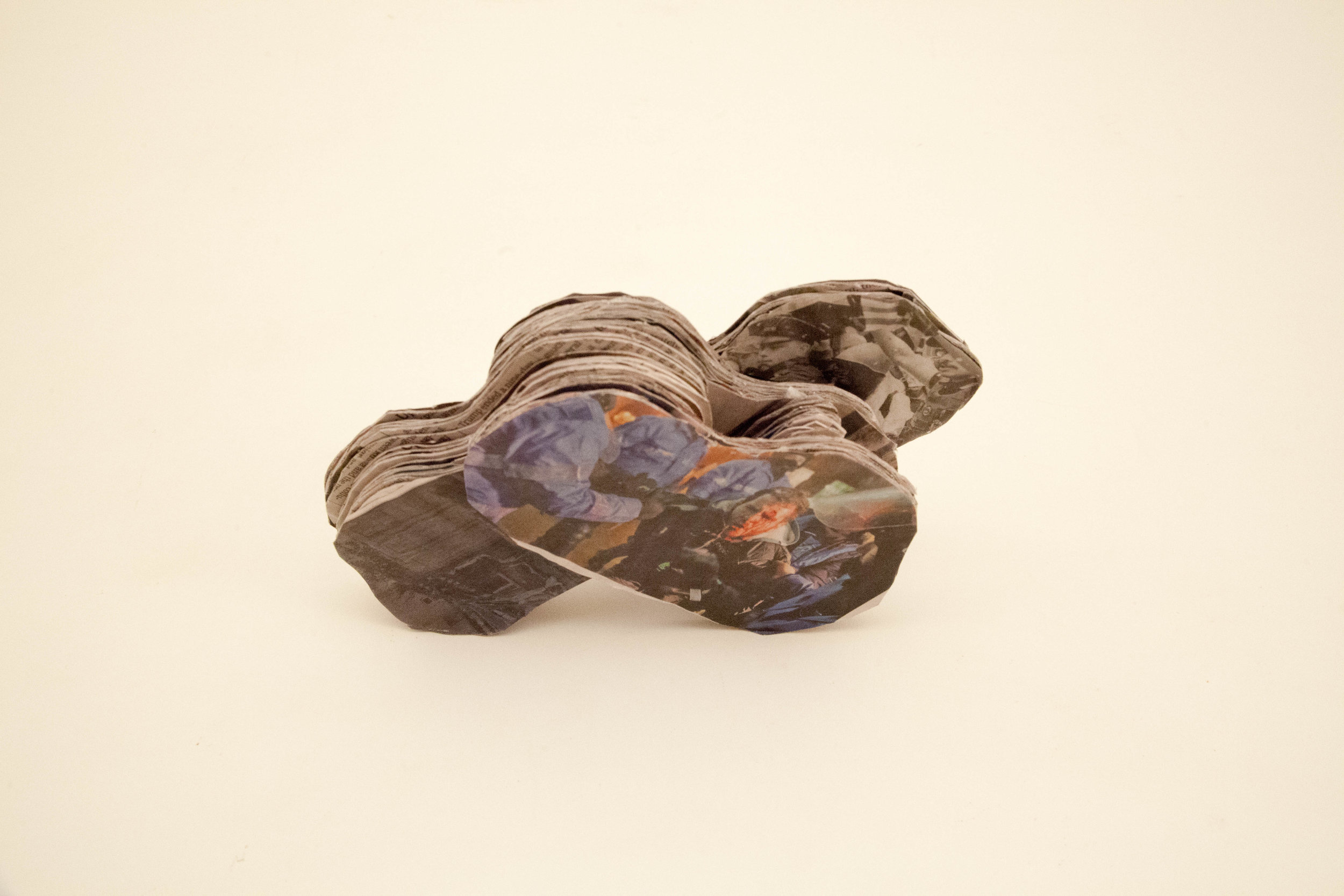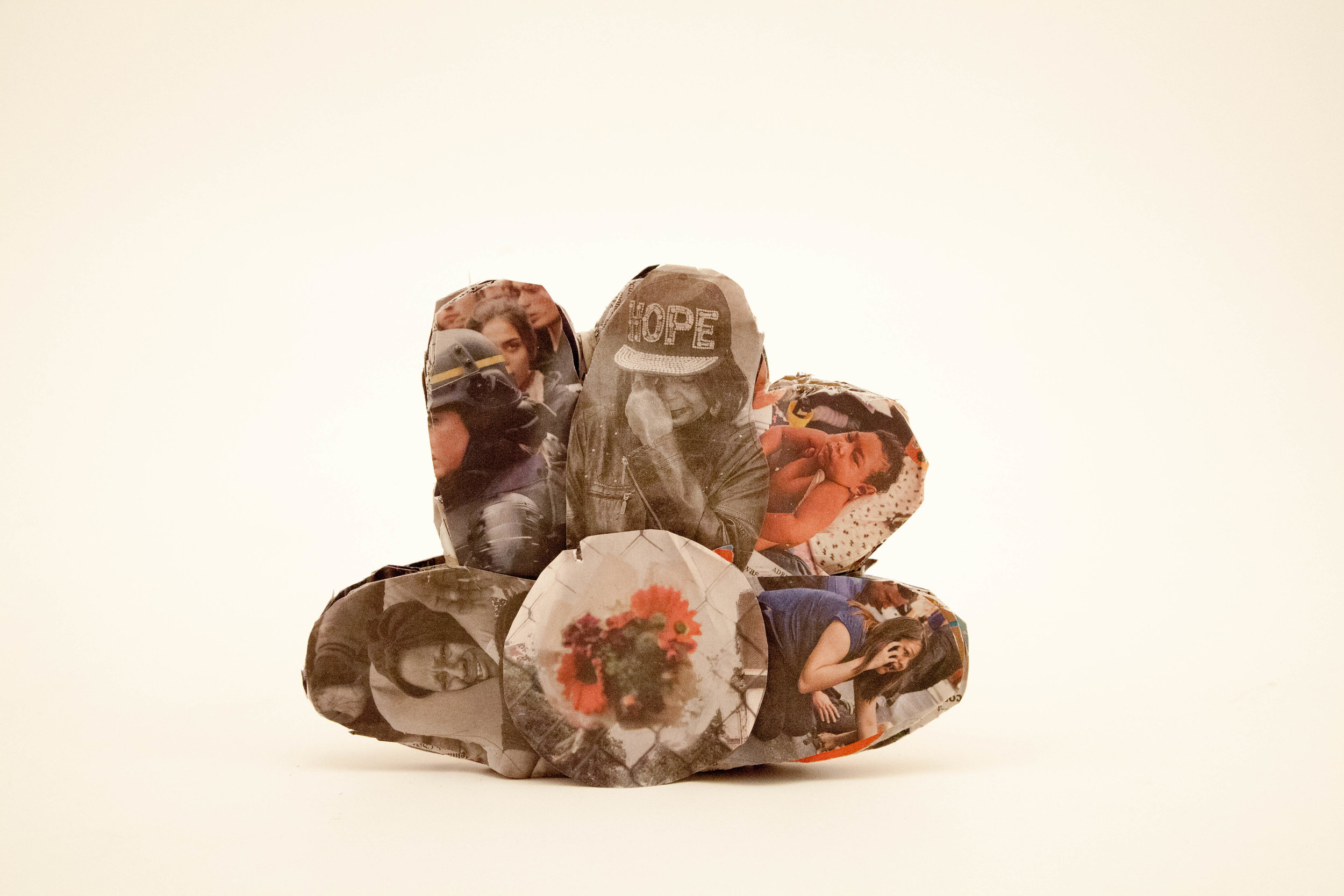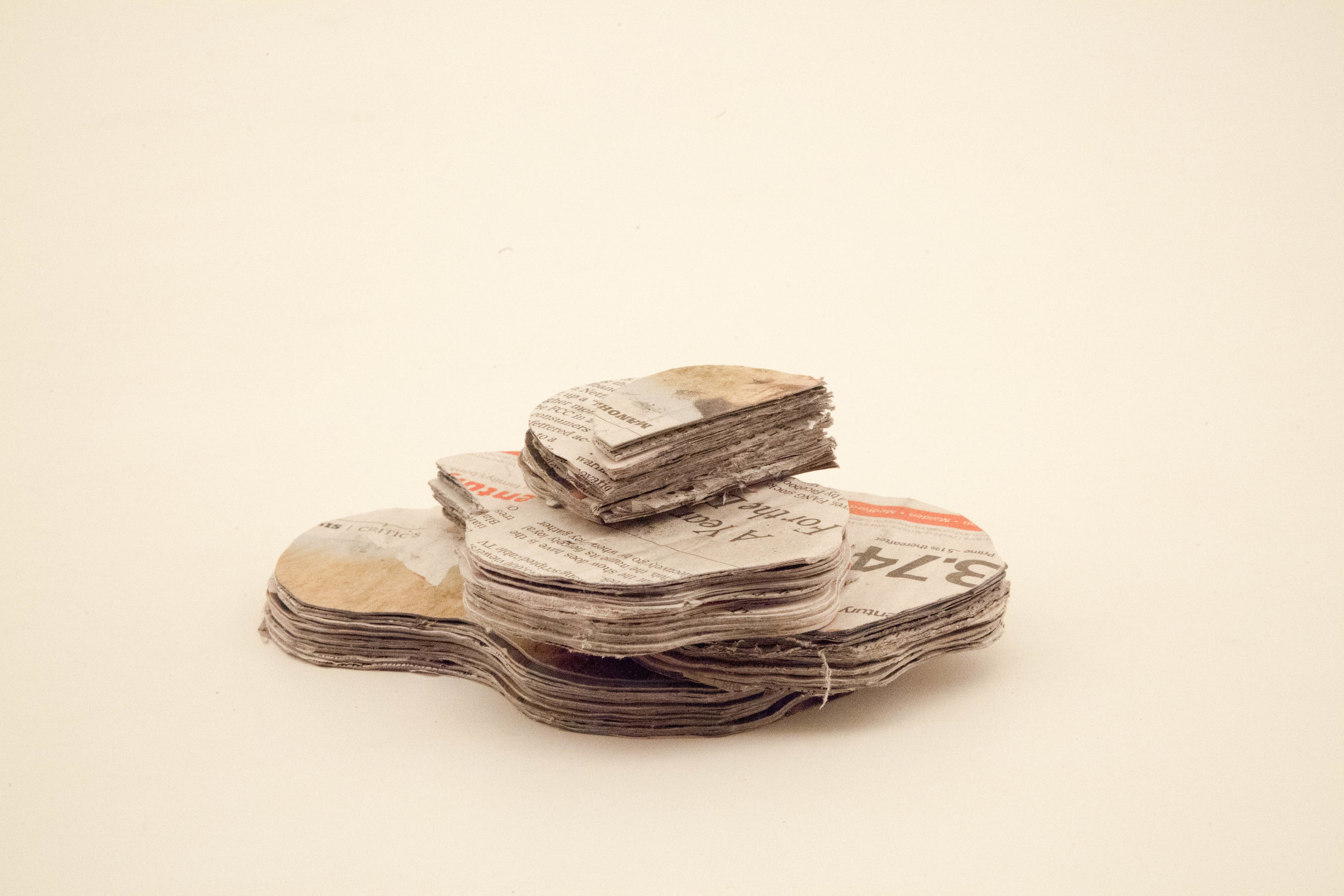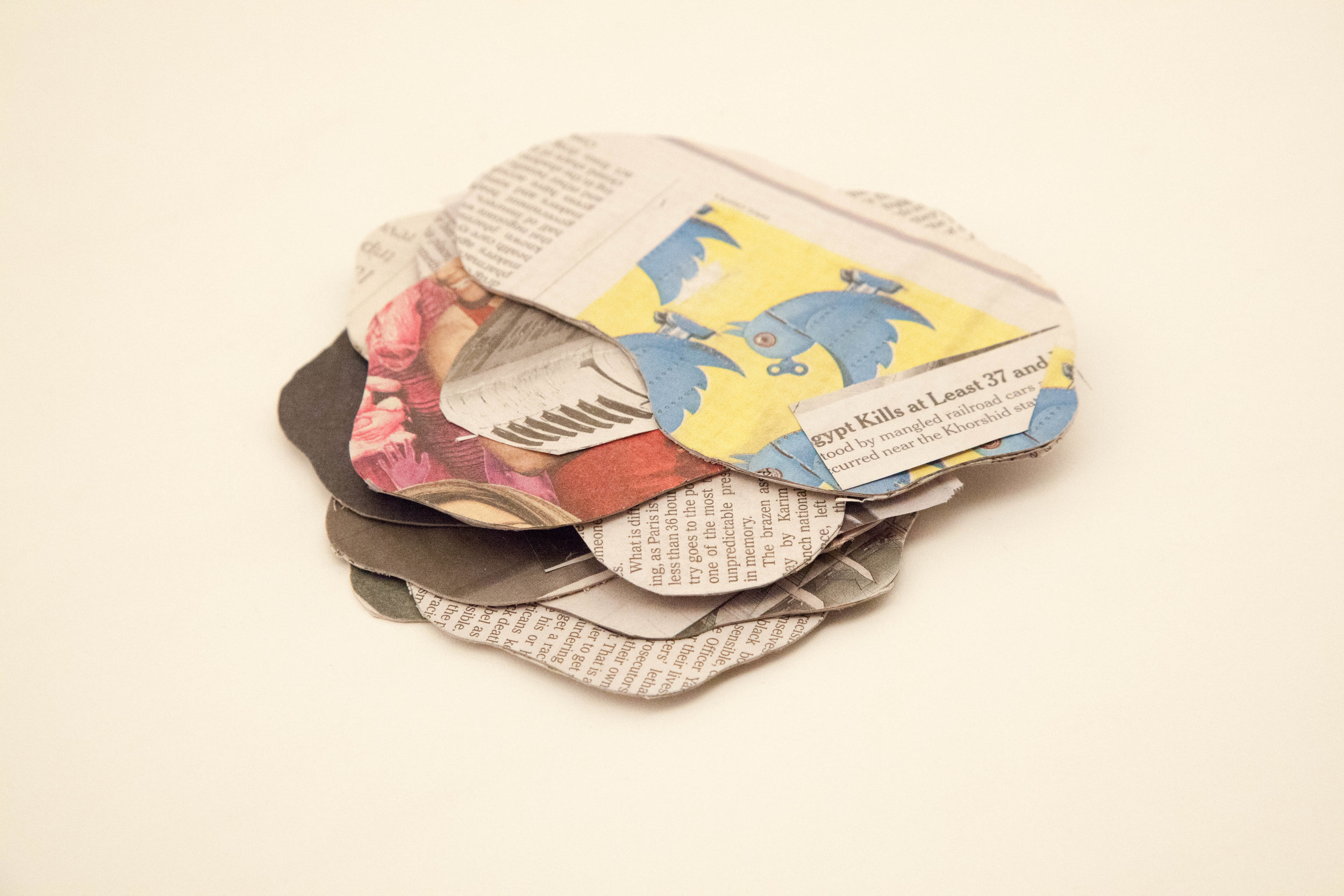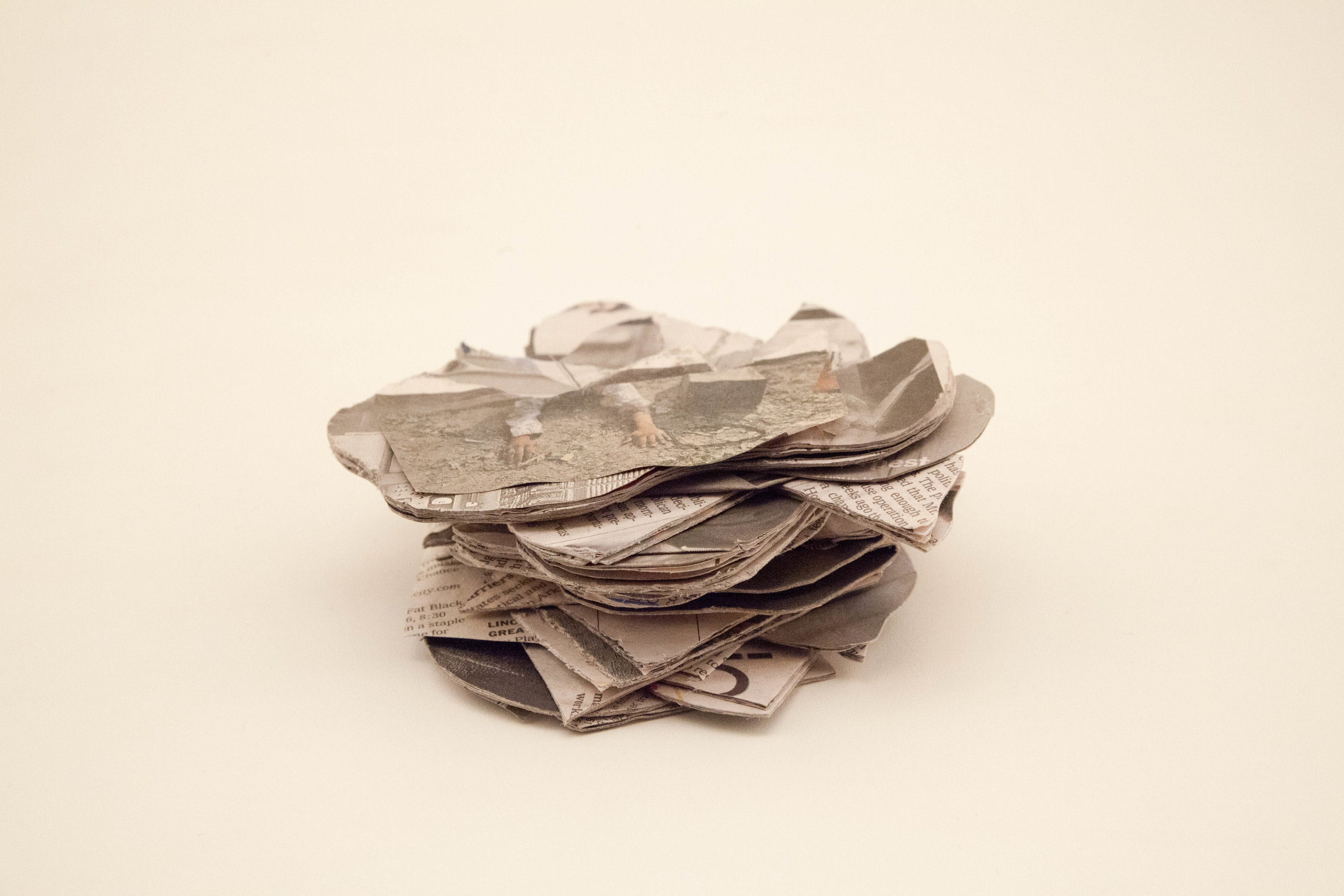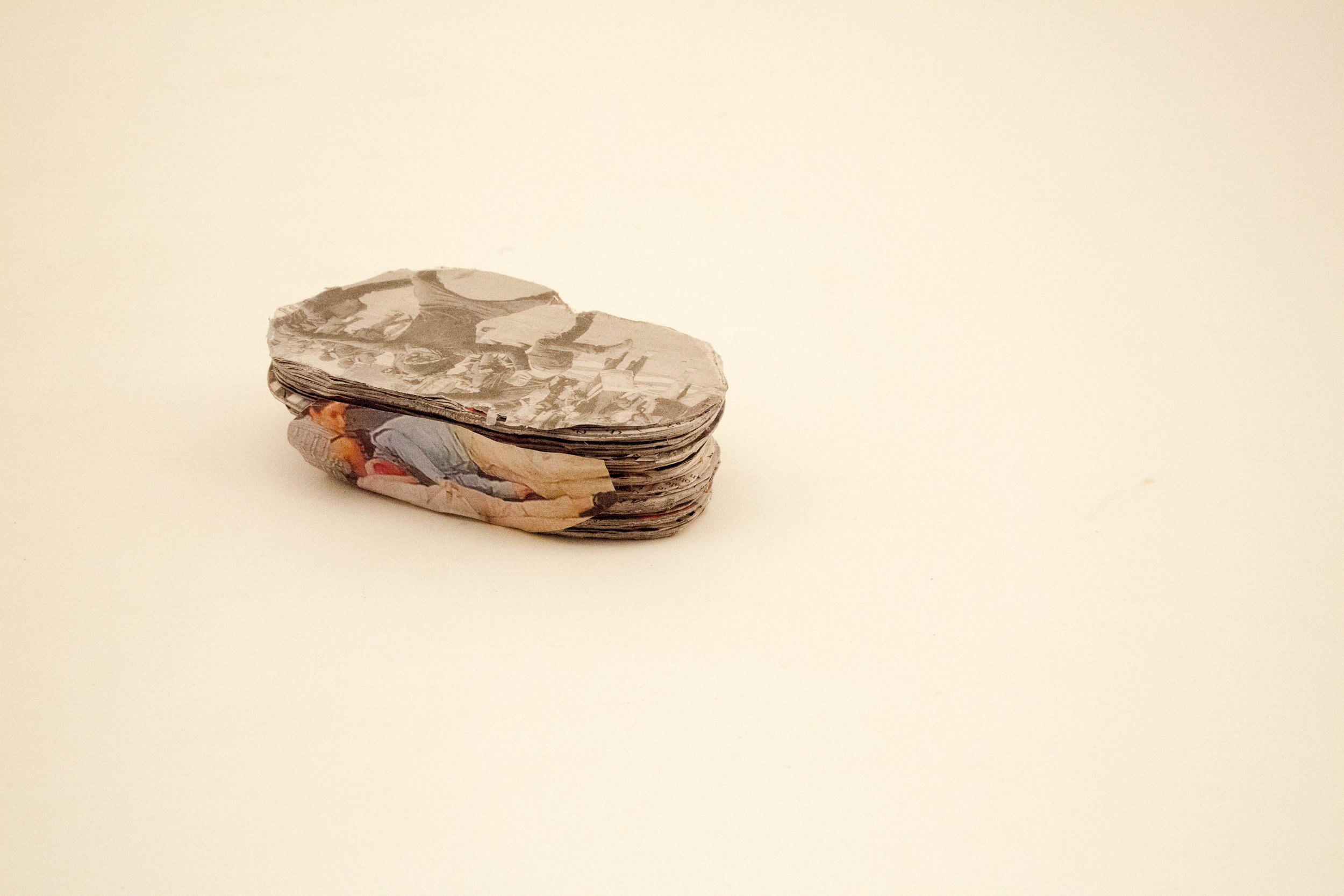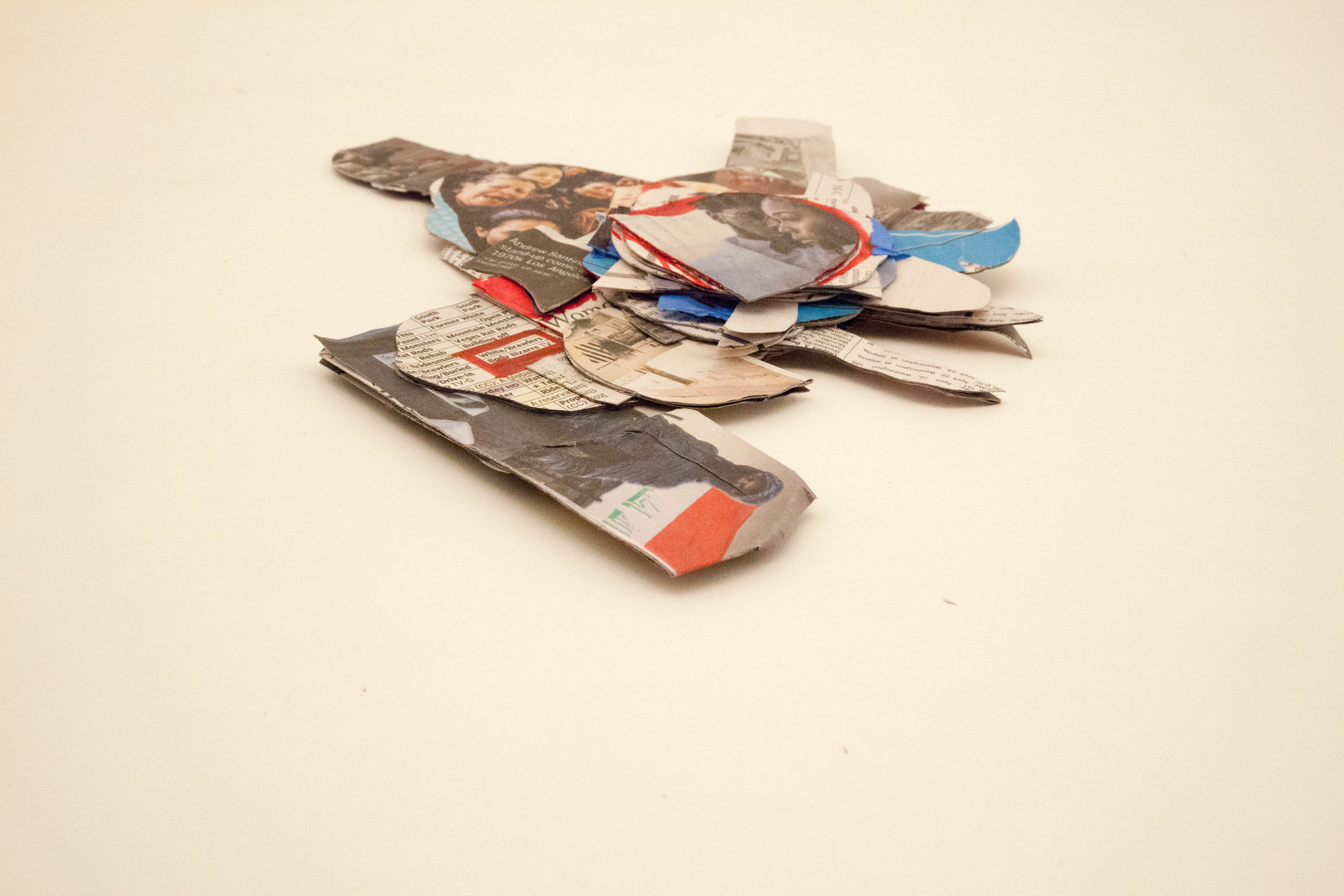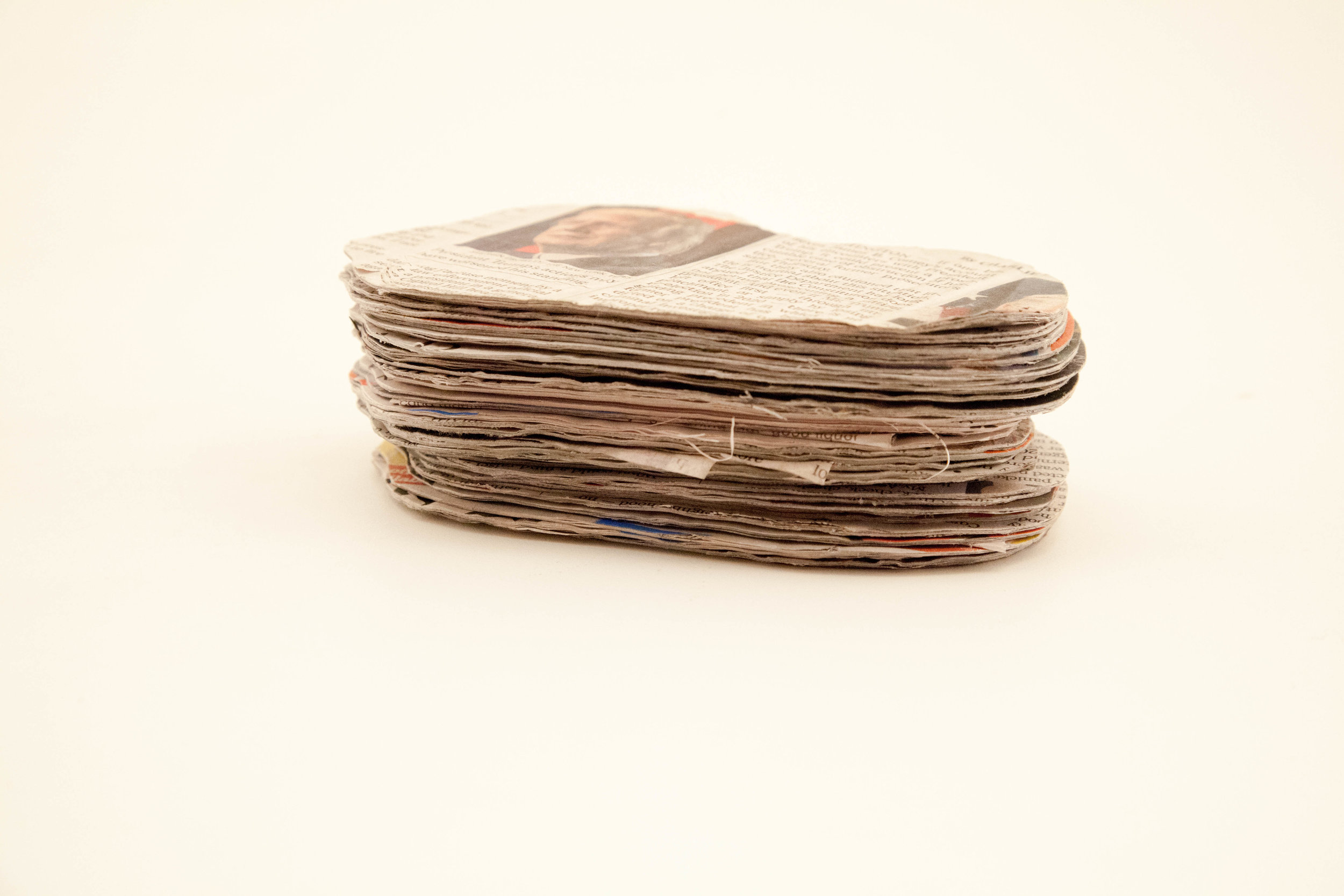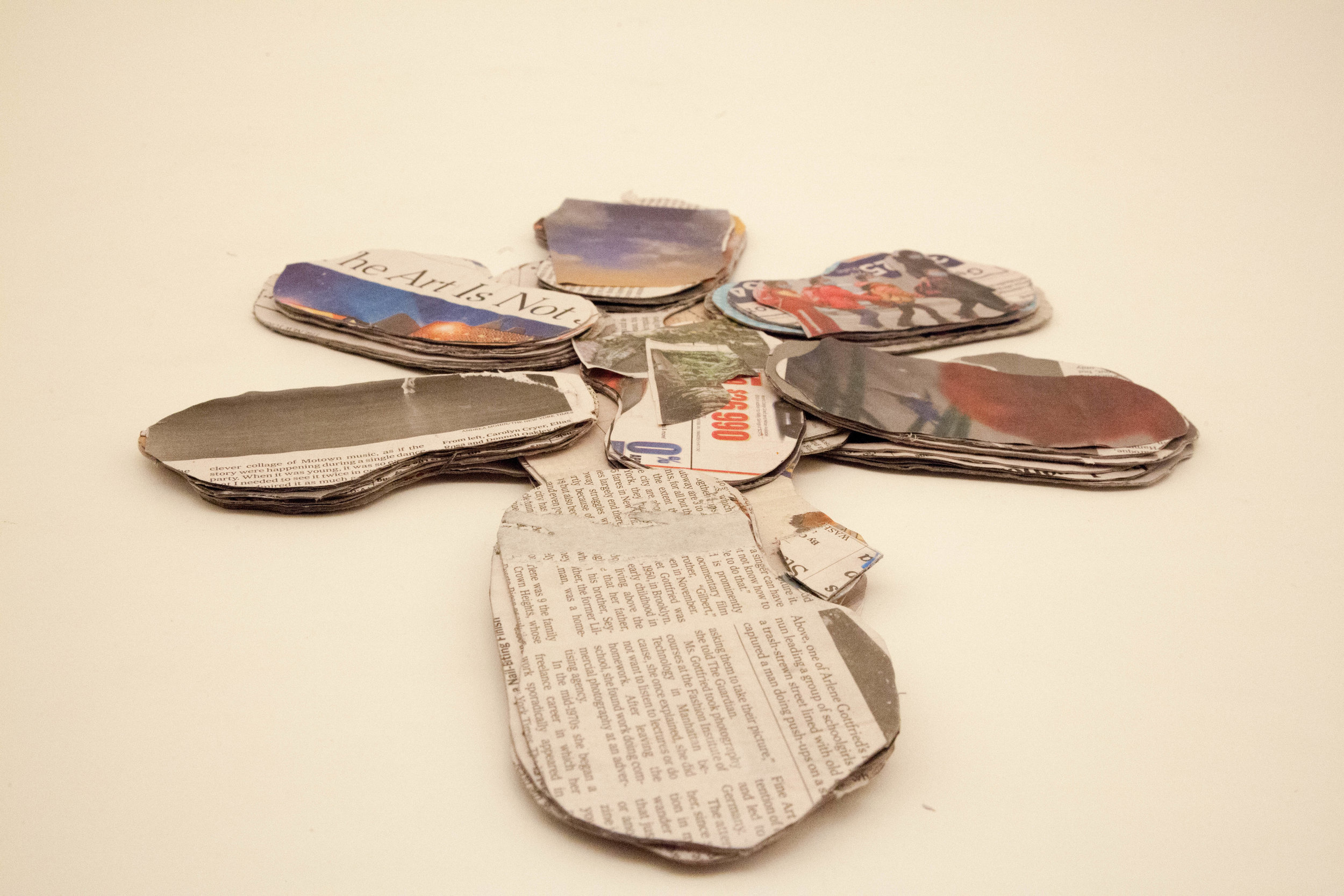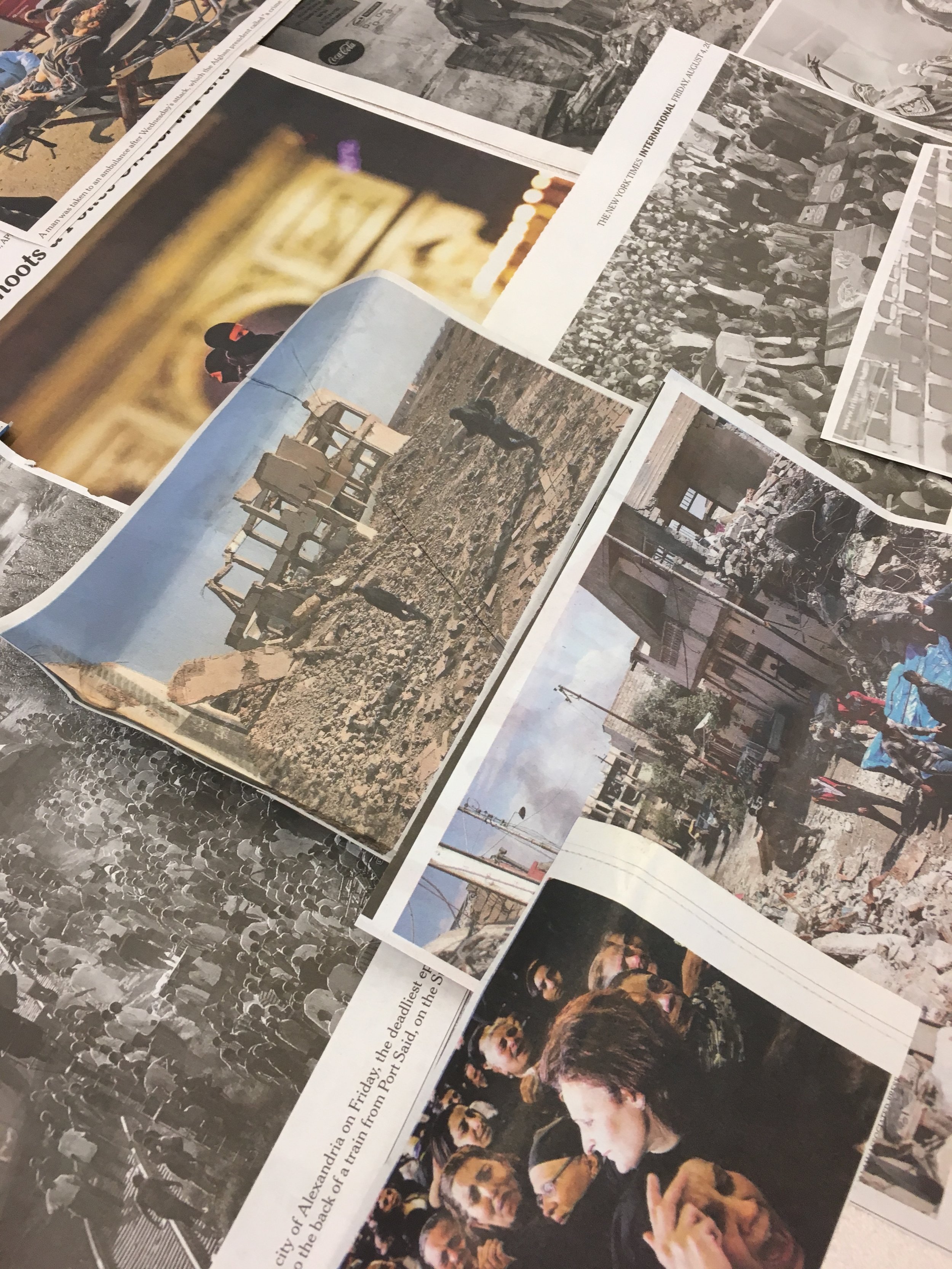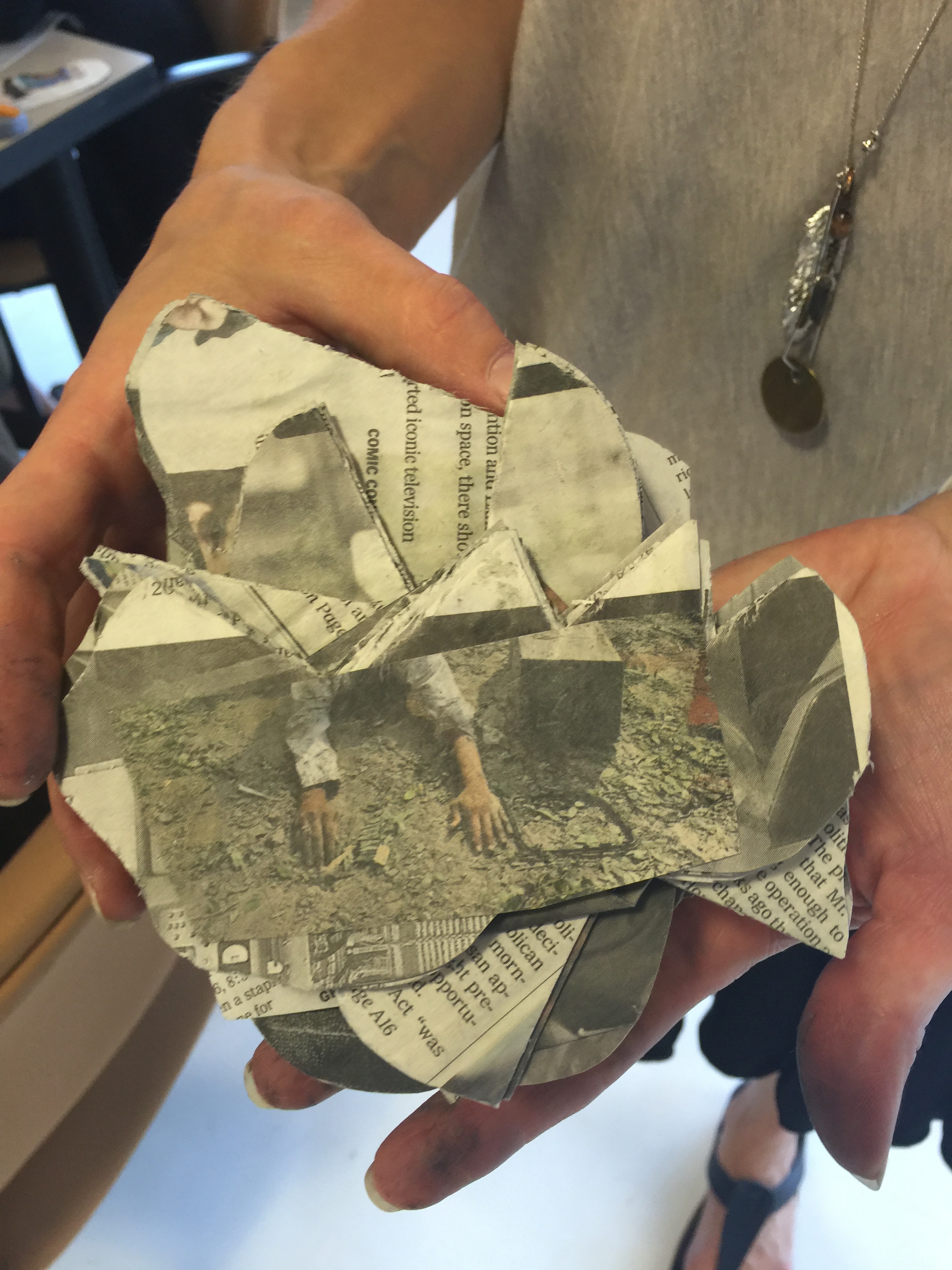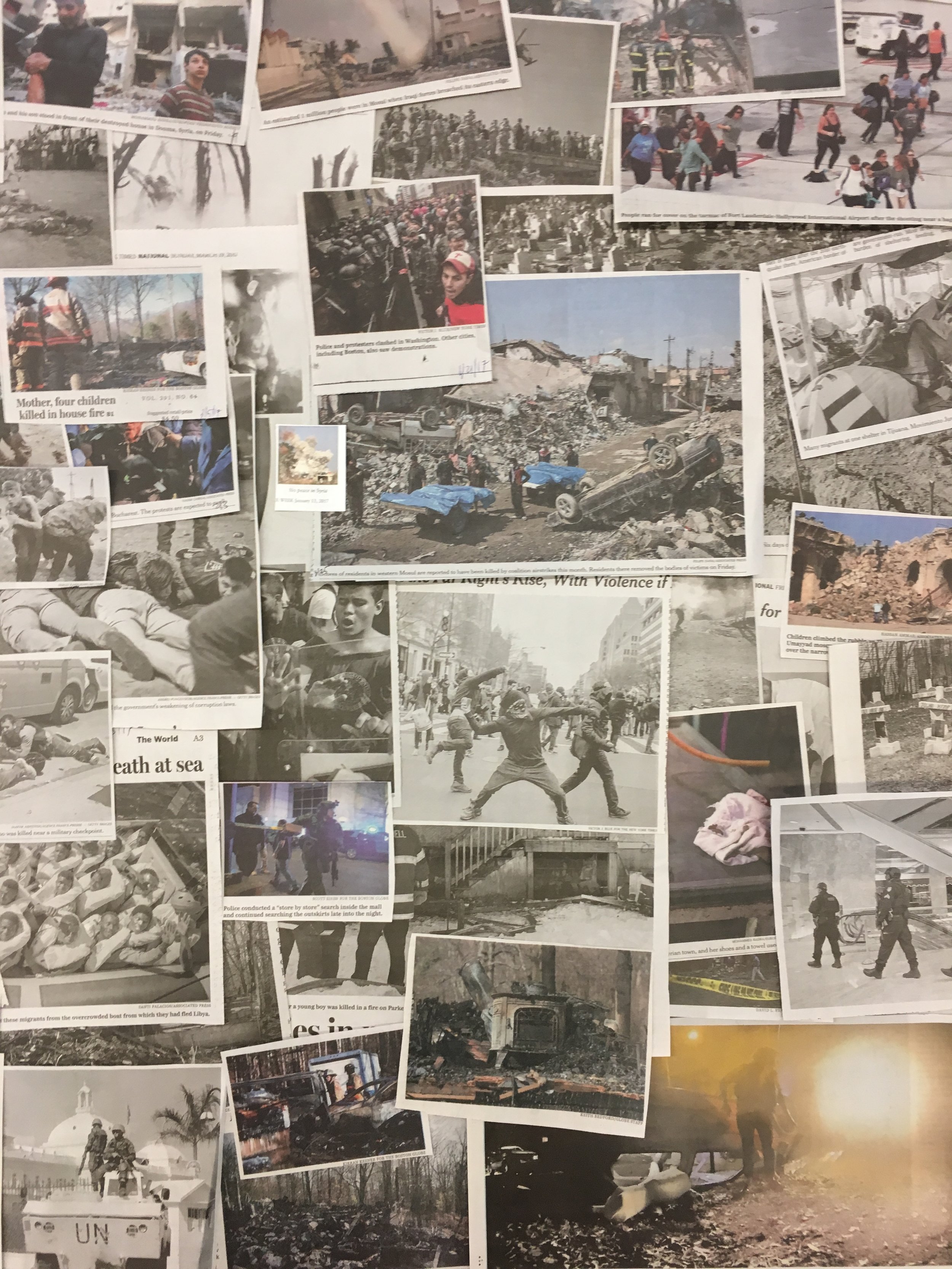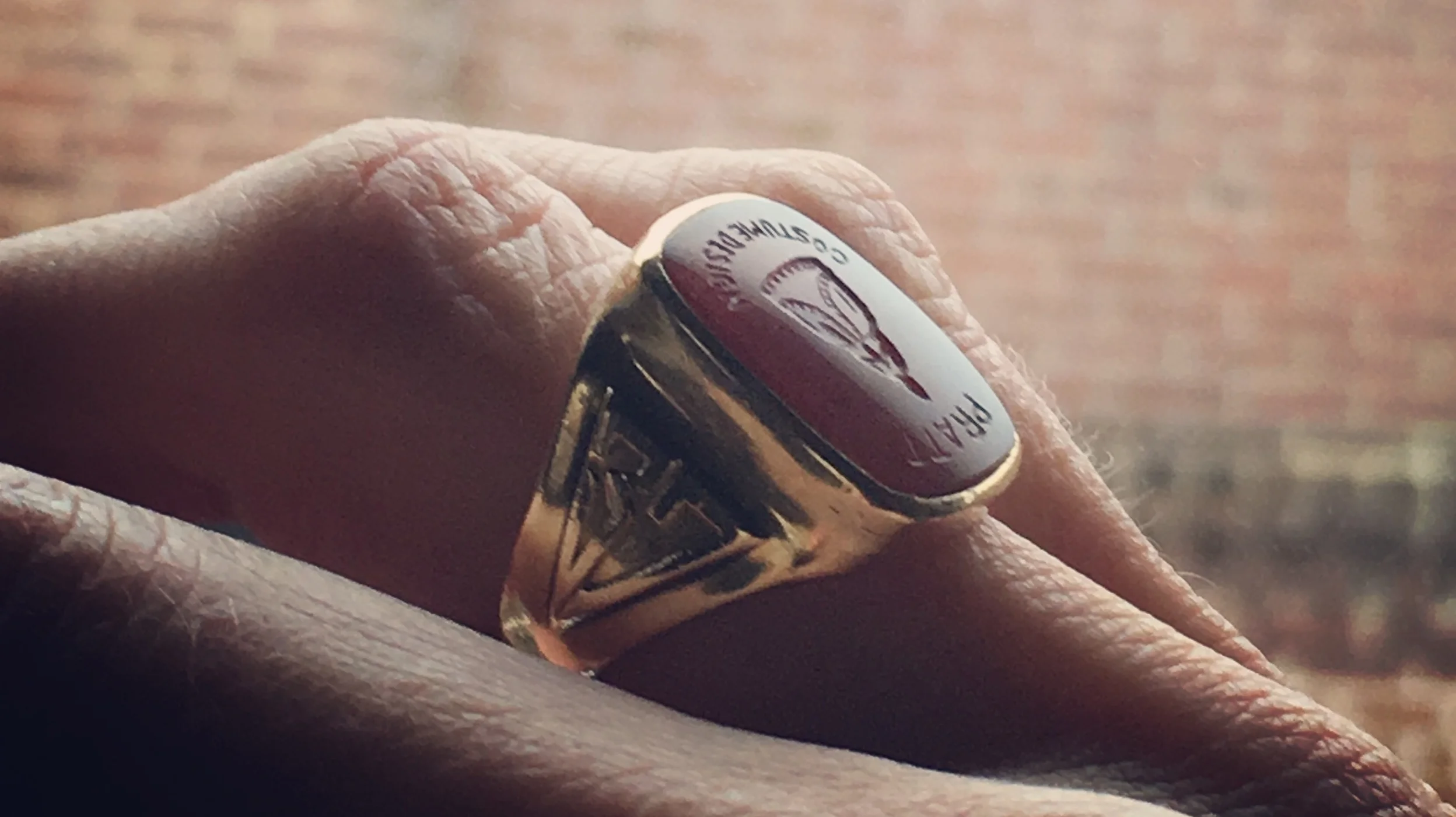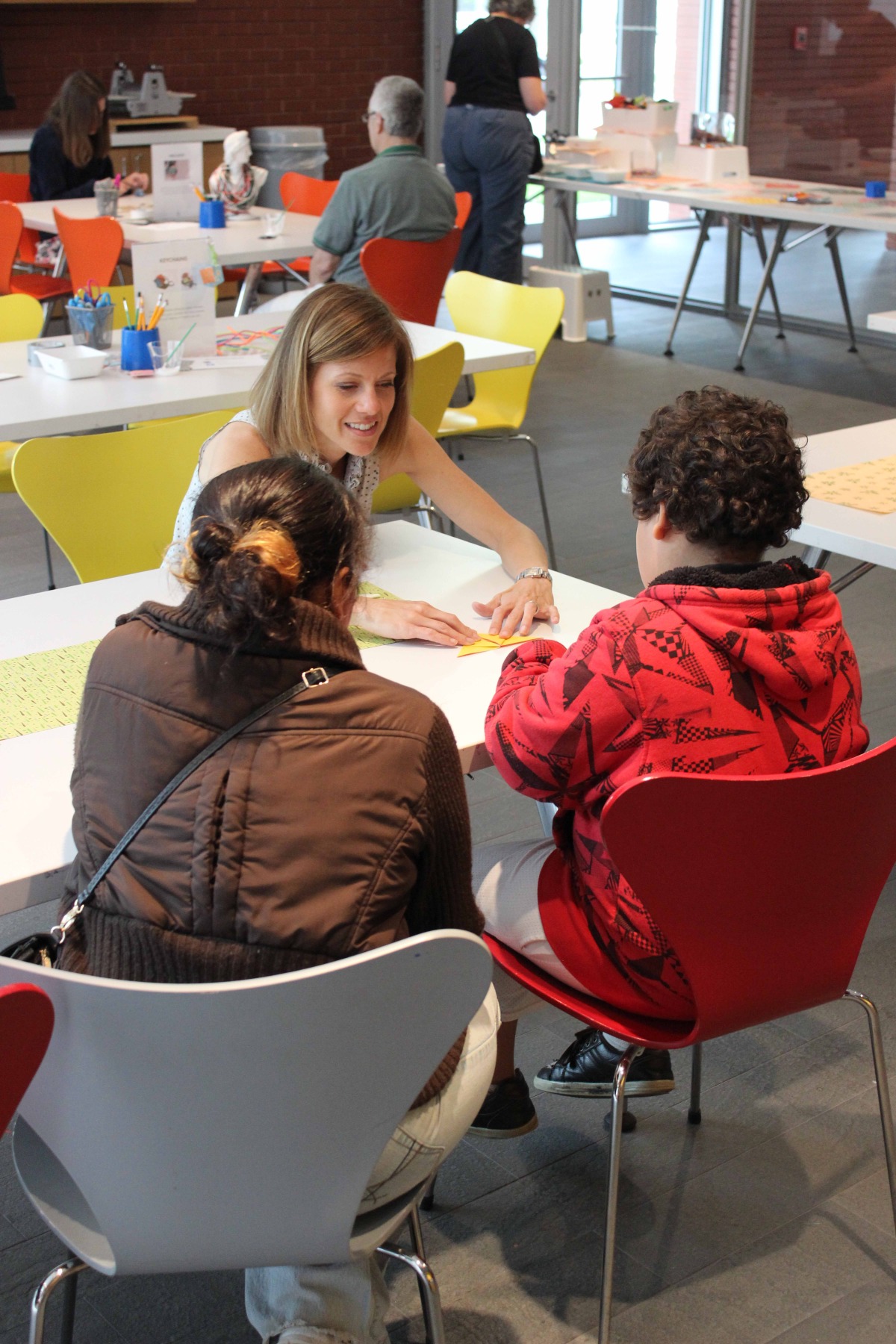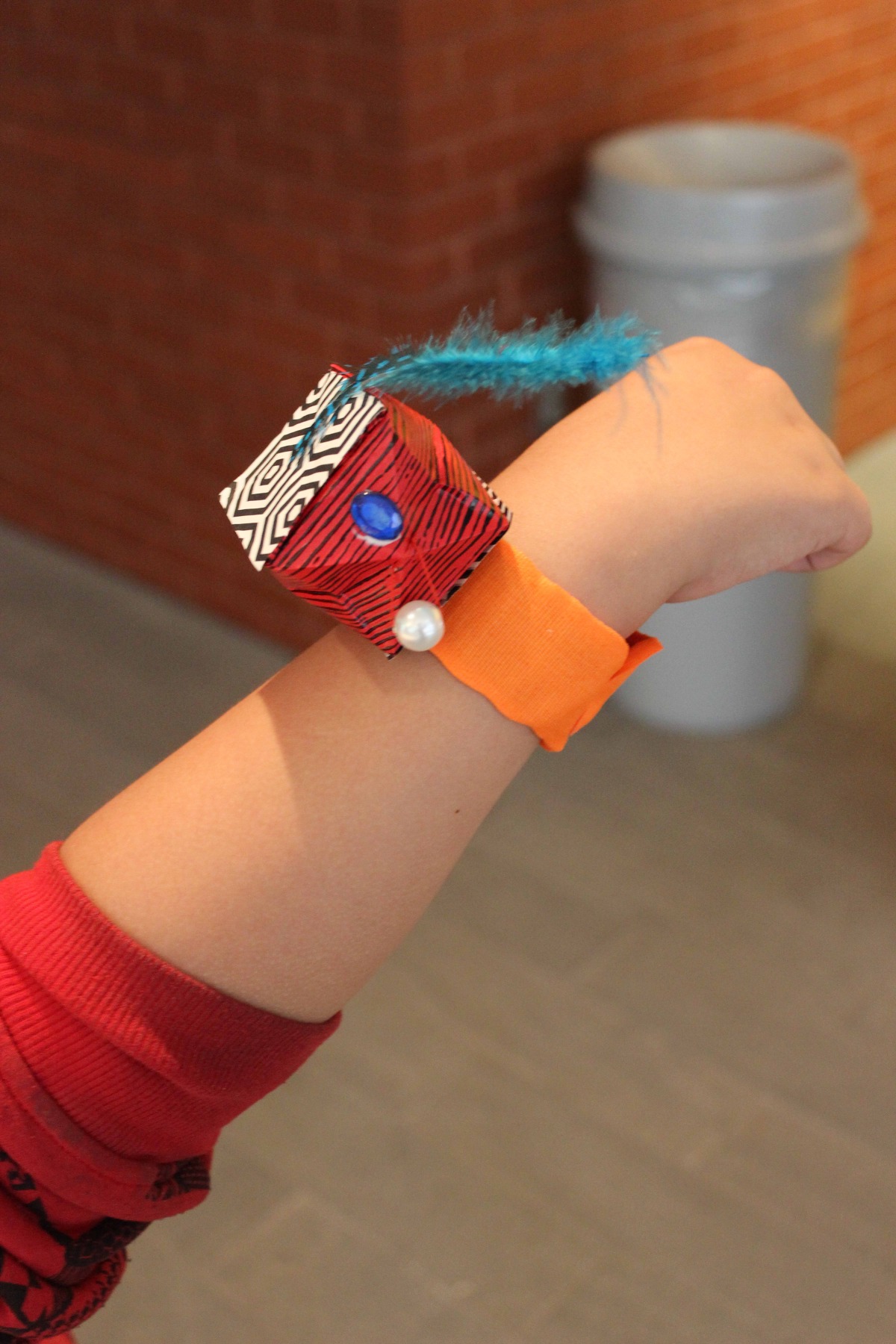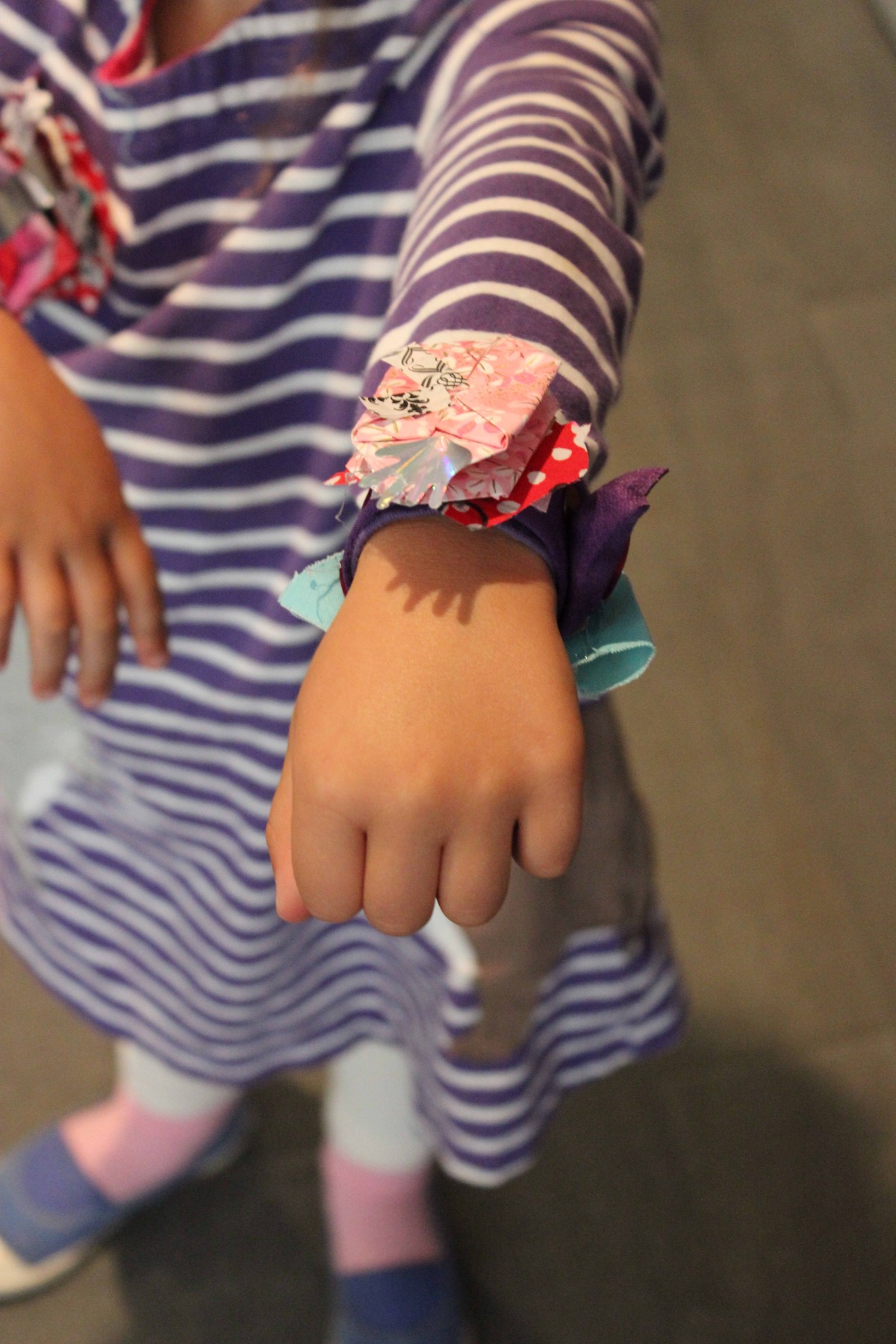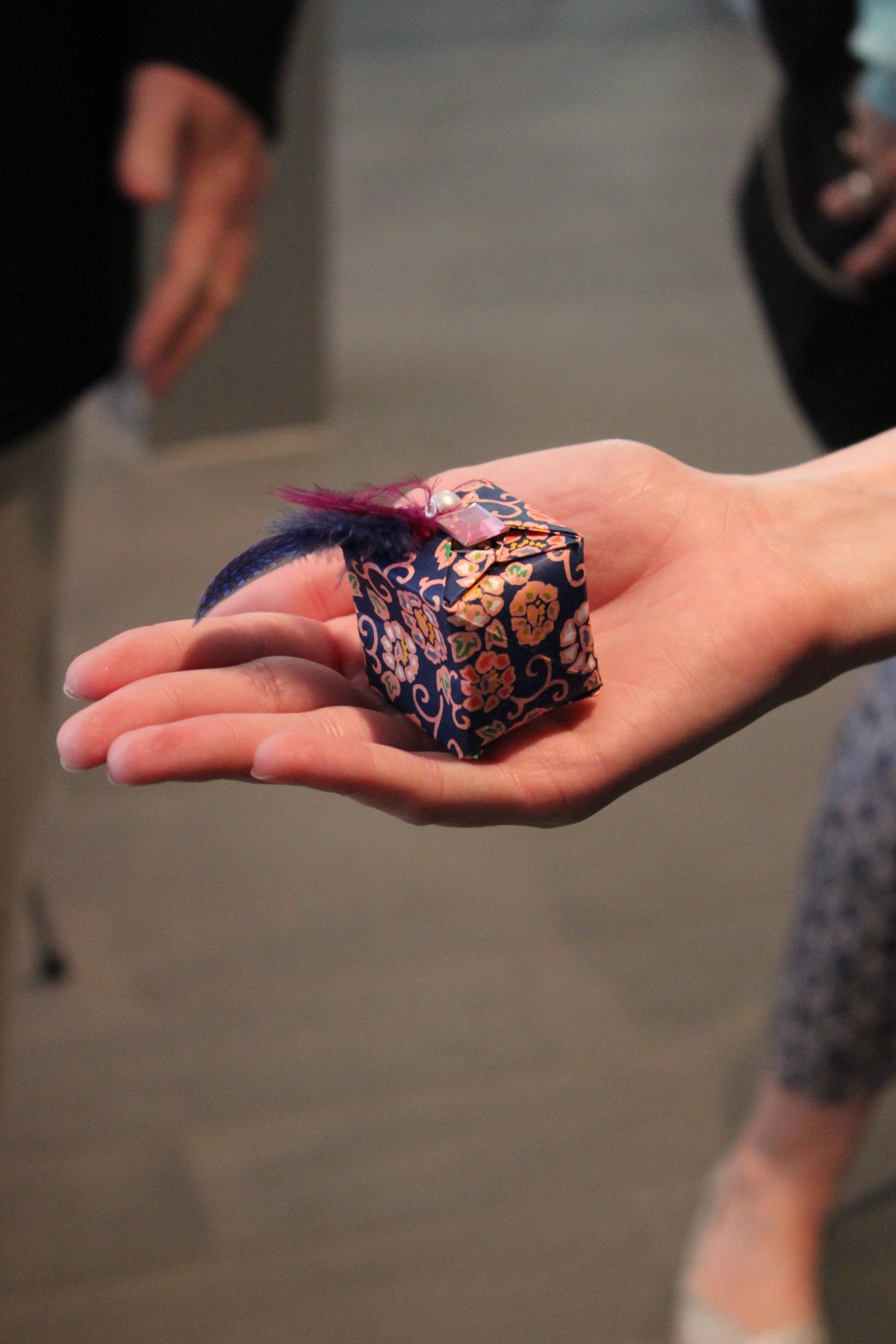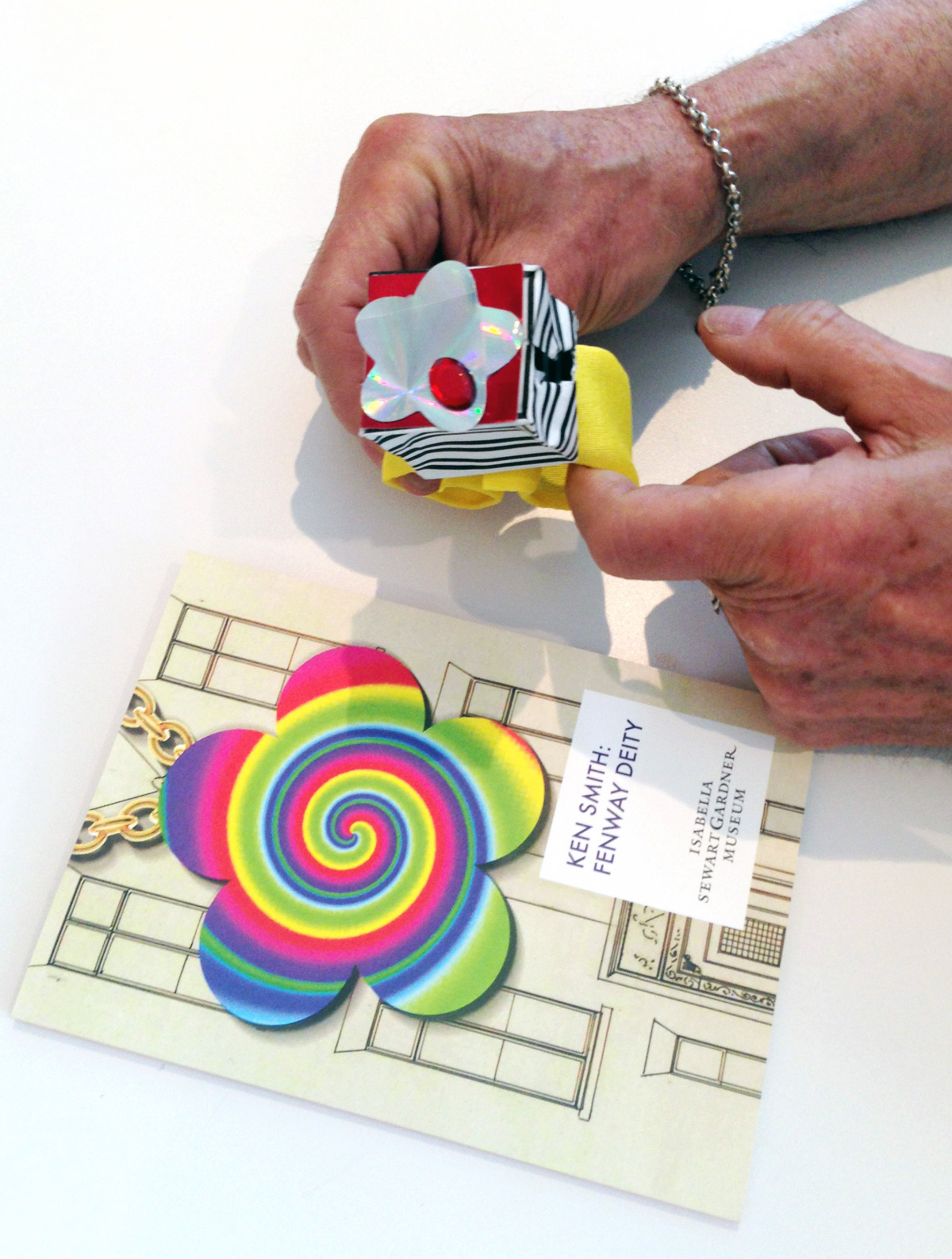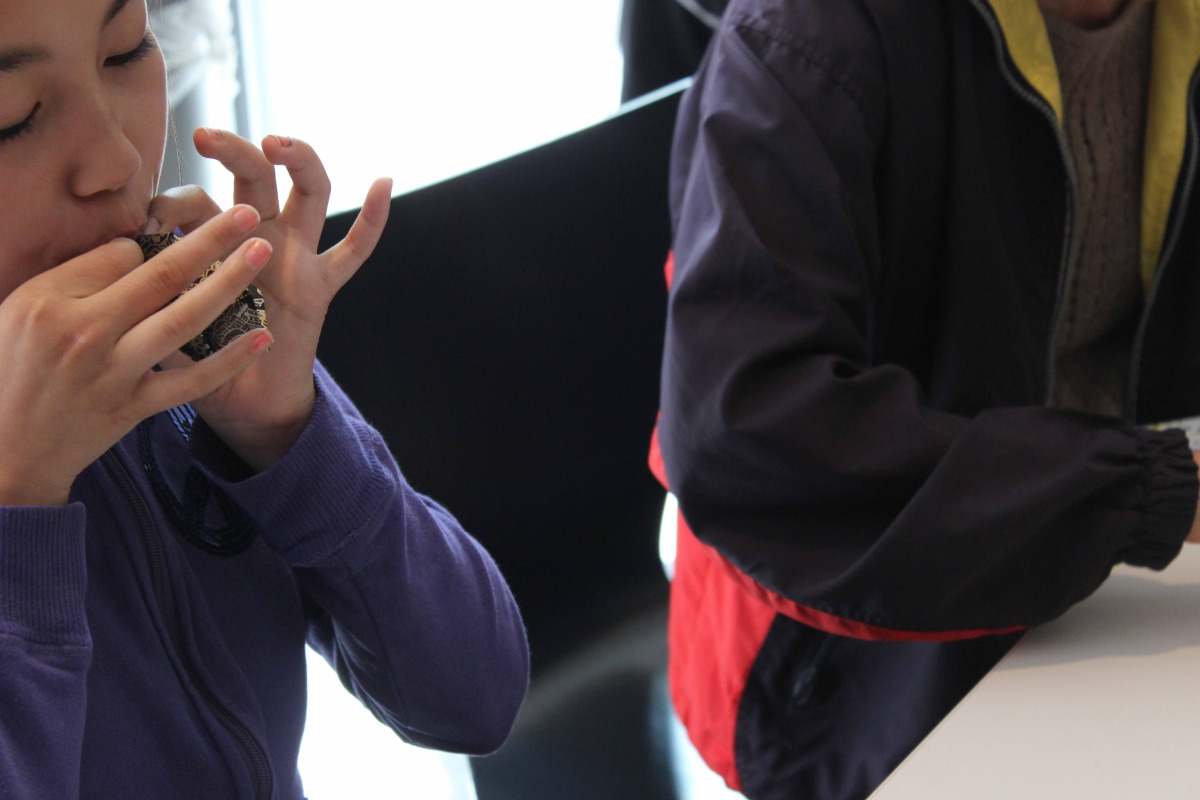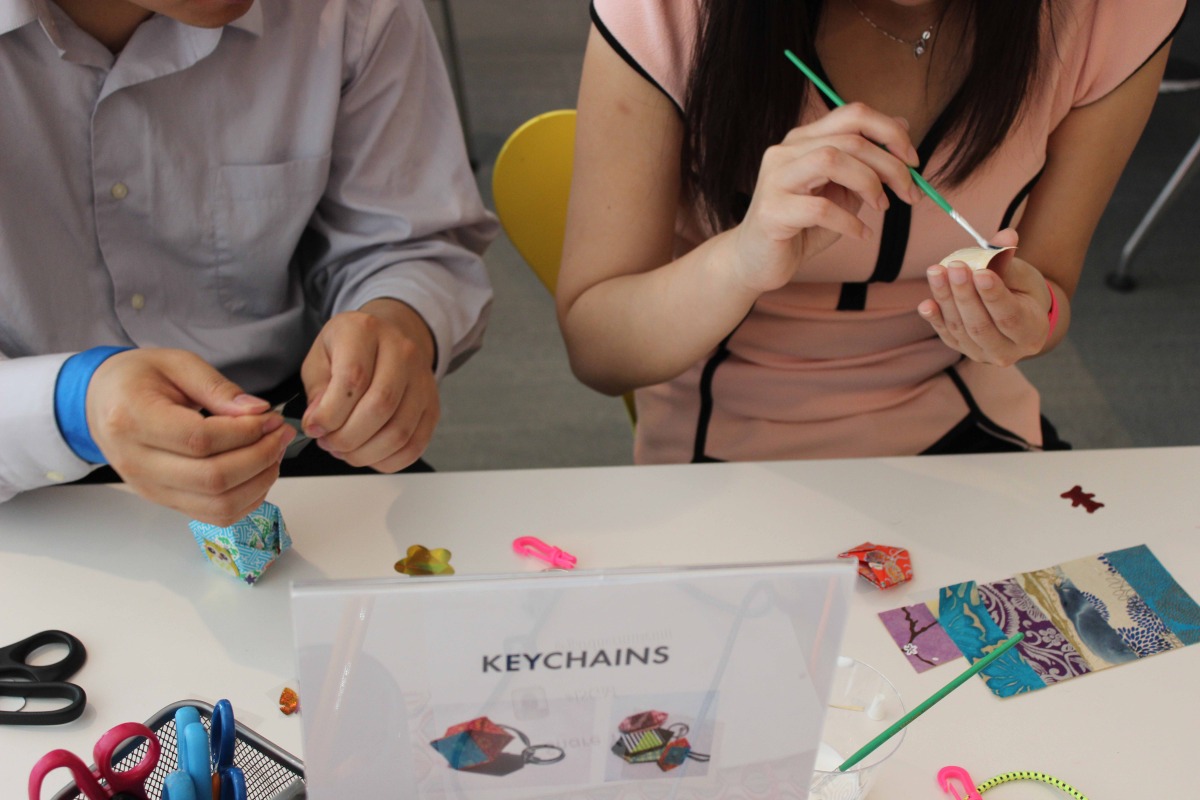On Friday, August 18, 2017, I had the pleasure of working with twelve curious and courageous souls who attended the Me(dia) Response: Self-Awareness and Activism Through Art-Making workshop at MIT List Visual Art Center. This, the first of a three-part workshop, stirred a conversation about the excess of violent imagery in our news and questioned the role of the photographers, editors, and consumers (us) in making (and disseminating) political statements.
After a guided meditation, participants selected violent images that spoke to them—hands that called out for help, people locked in protest for their civil rights—from a collection of over 100 that I've been snipping from newspapers since December 2016.
We got right to making, each person gluing together over 60 pages of newspaper. The goal was to give participants quiet time to consider the glut of violent imagery and news as they busied their hands. But heated political conversations quickly ensued. The imagery may have aggrevated some who were not comfortable sitting with the feelings it evoked. Or perhaps they were frustrated at not being heard in other contexts.
As time went on, the suggested shape, a vertical stack akin to striated rock, took on new and surprising shapes — a flower, a frayed puck shape, and a hand for instance.


